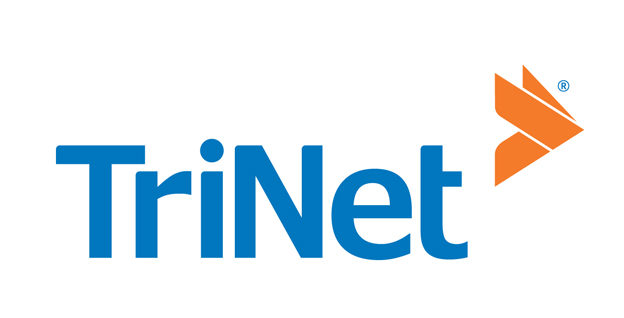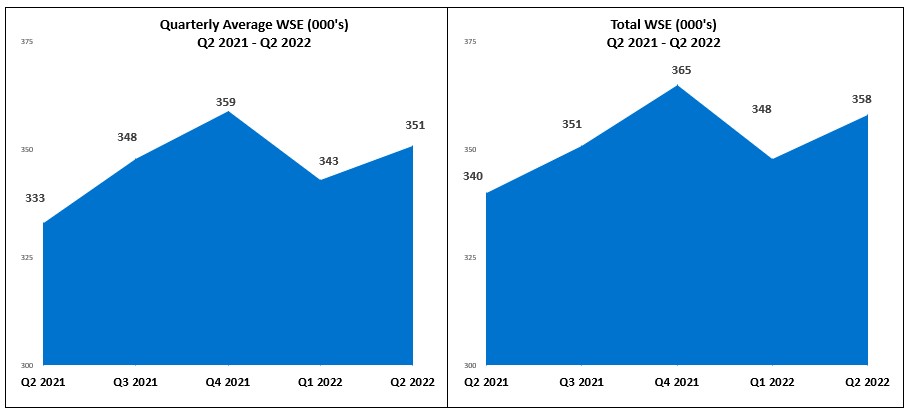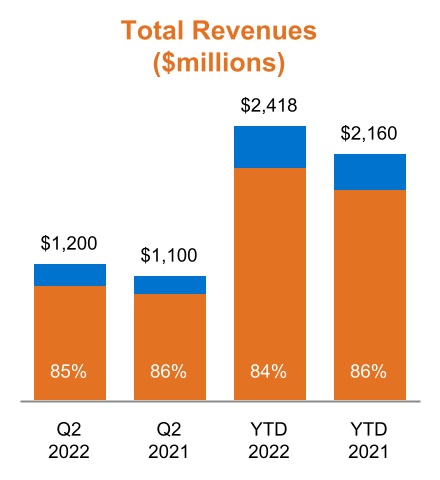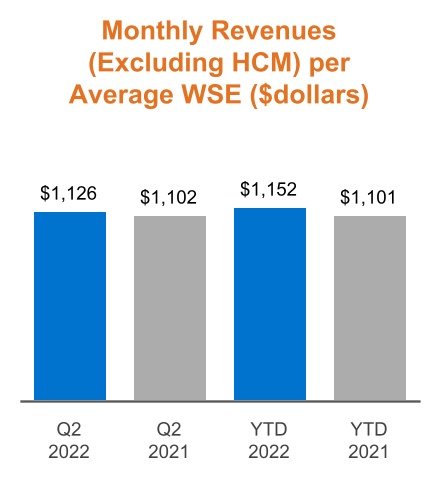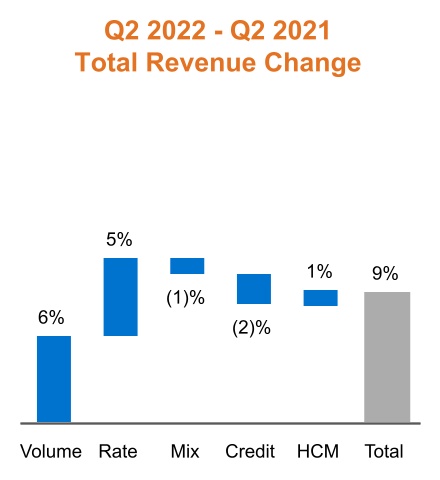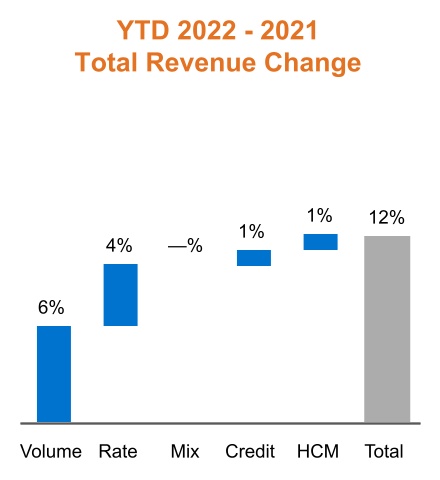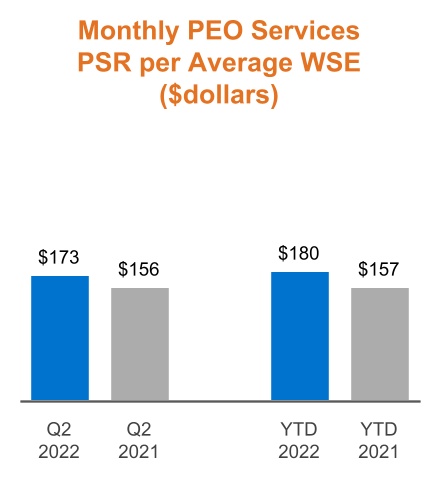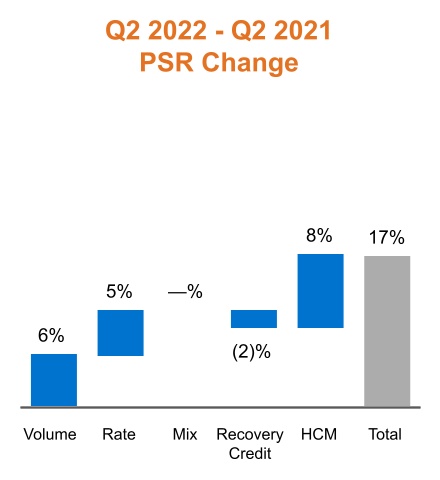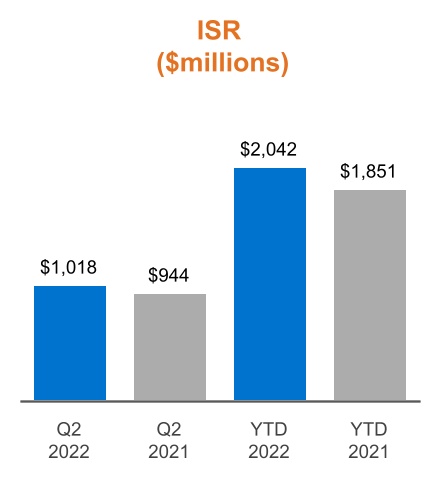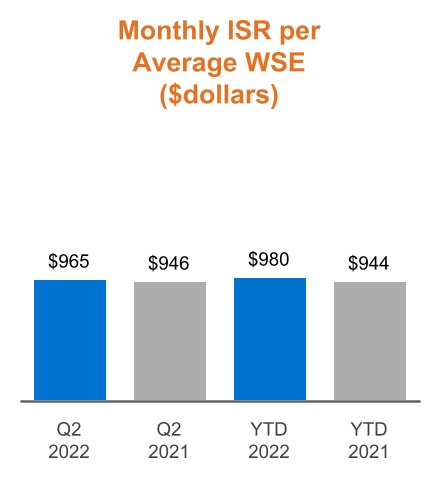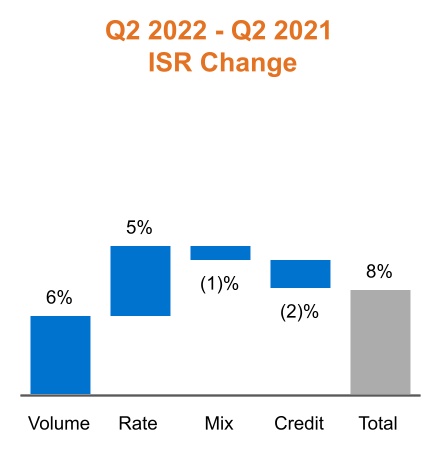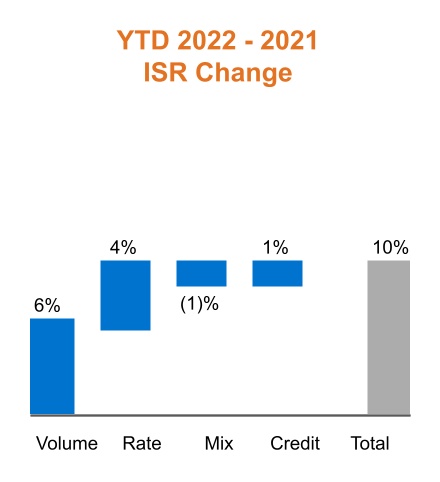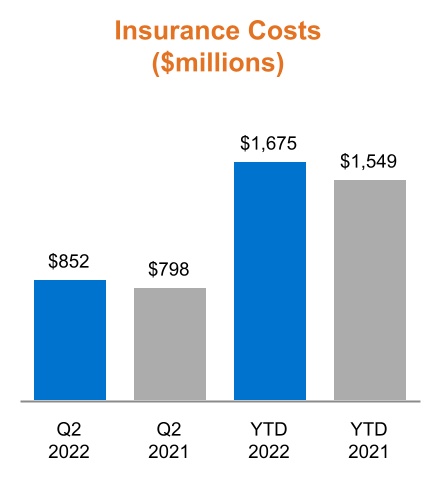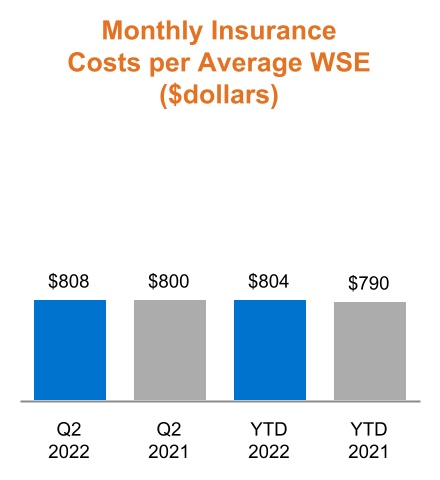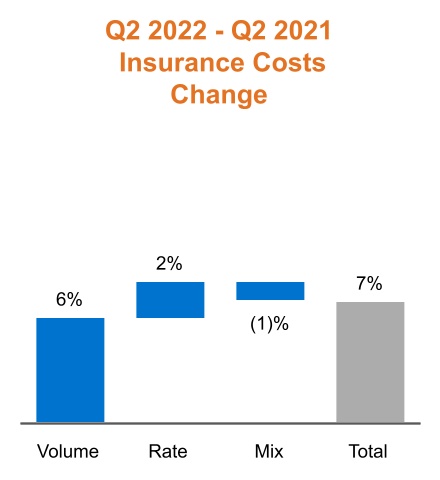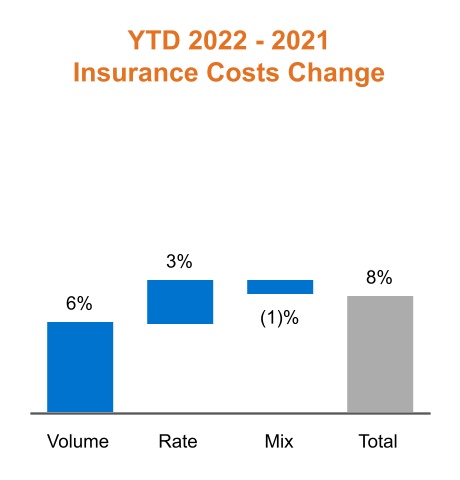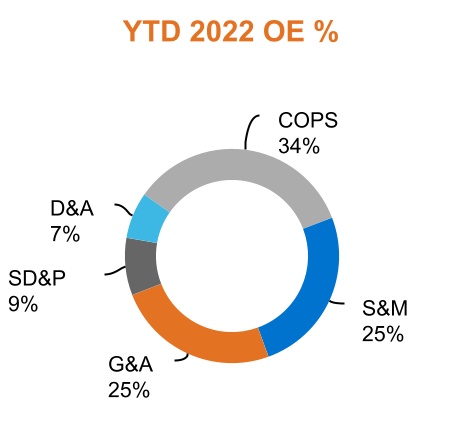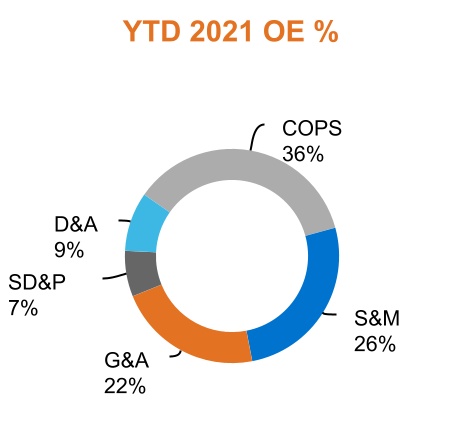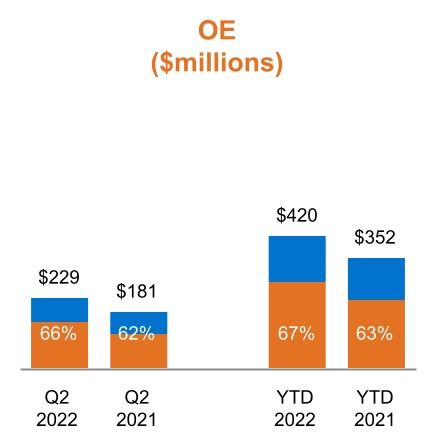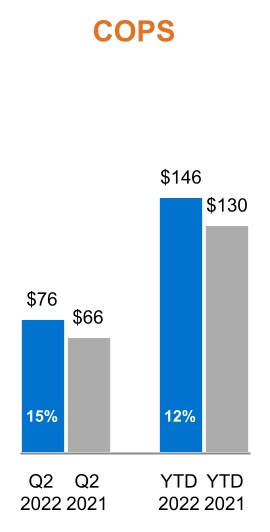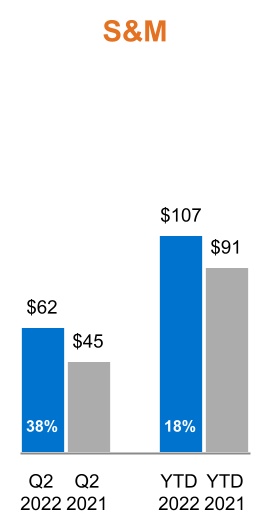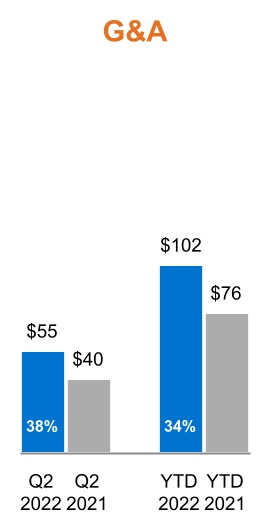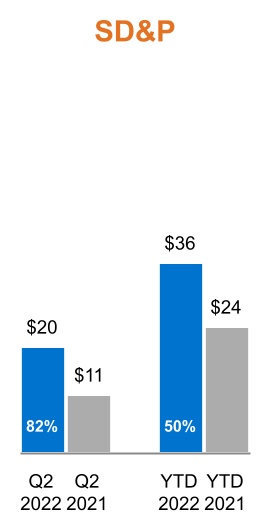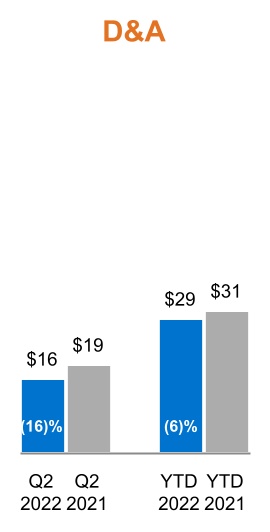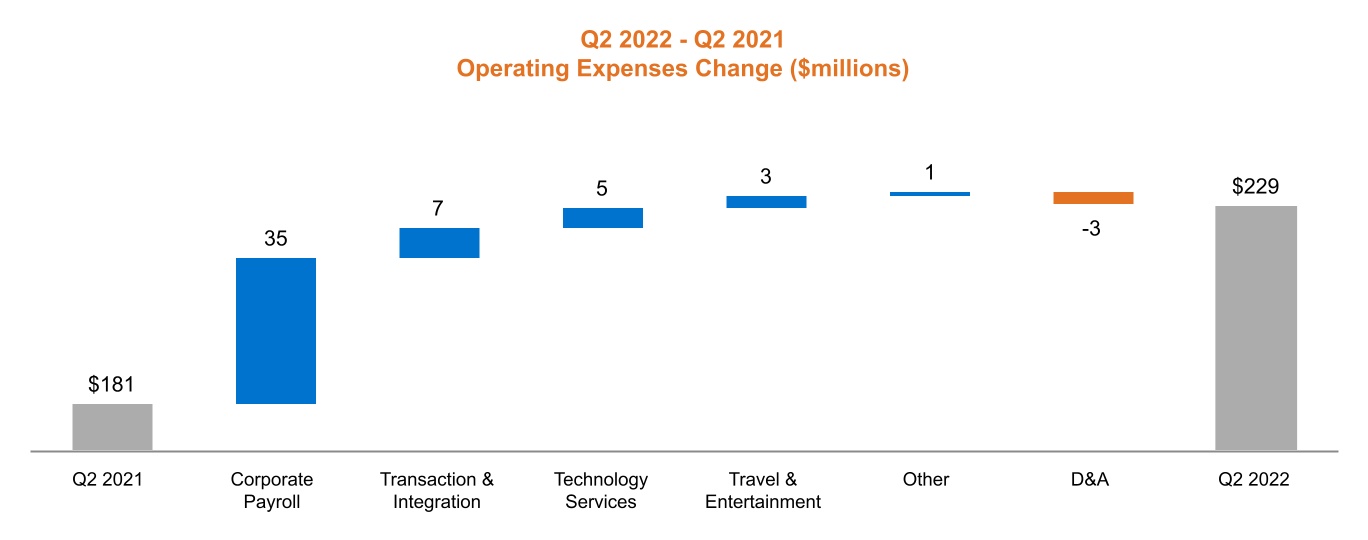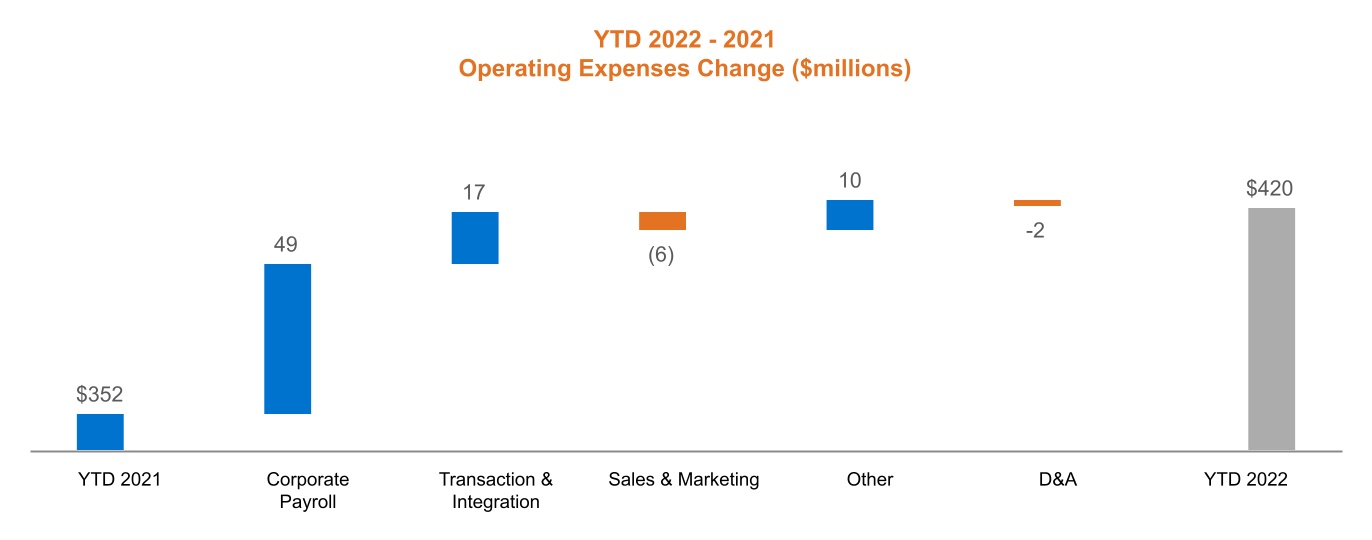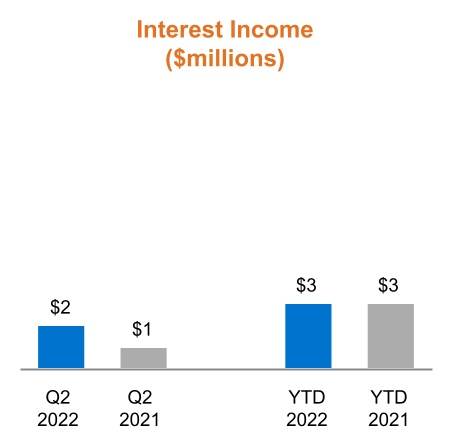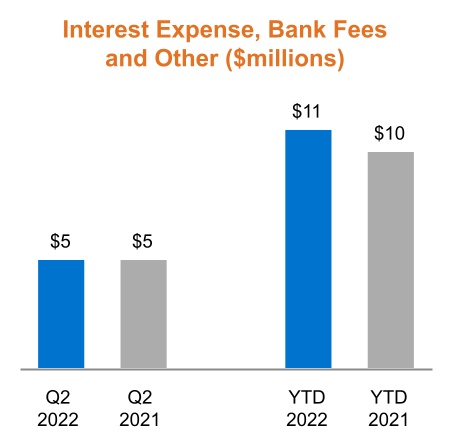0000937098December 312022Q2FALSE100009370982022-01-012022-06-3000009370982022-07-19xbrli:shares0000937098tnet:ProfessionalServicesMember2022-04-012022-06-30iso4217:USD0000937098tnet:ProfessionalServicesMember2021-04-012021-06-300000937098tnet:ProfessionalServicesMember2022-01-012022-06-300000937098tnet:ProfessionalServicesMember2021-01-012021-06-300000937098tnet:InsuranceServicesMember2022-04-012022-06-300000937098tnet:InsuranceServicesMember2021-04-012021-06-300000937098tnet:InsuranceServicesMember2022-01-012022-06-300000937098tnet:InsuranceServicesMember2021-01-012021-06-3000009370982022-04-012022-06-3000009370982021-04-012021-06-3000009370982021-01-012021-06-30iso4217:USDxbrli:shares00009370982022-06-3000009370982021-12-3100009370982022-03-3100009370982021-03-3100009370982020-12-310000937098us-gaap:CommonStockIncludingAdditionalPaidInCapitalMember2022-03-310000937098us-gaap:CommonStockIncludingAdditionalPaidInCapitalMember2021-03-310000937098us-gaap:CommonStockIncludingAdditionalPaidInCapitalMember2021-12-310000937098us-gaap:CommonStockIncludingAdditionalPaidInCapitalMember2020-12-310000937098us-gaap:CommonStockIncludingAdditionalPaidInCapitalMember2022-04-012022-06-300000937098us-gaap:CommonStockIncludingAdditionalPaidInCapitalMember2022-01-012022-06-300000937098us-gaap:CommonStockIncludingAdditionalPaidInCapitalMember2021-04-012021-06-300000937098us-gaap:CommonStockIncludingAdditionalPaidInCapitalMember2021-01-012021-06-300000937098us-gaap:CommonStockIncludingAdditionalPaidInCapitalMember2022-06-300000937098us-gaap:CommonStockIncludingAdditionalPaidInCapitalMember2021-06-300000937098us-gaap:RetainedEarningsMember2022-03-310000937098us-gaap:RetainedEarningsMember2021-03-310000937098us-gaap:RetainedEarningsMember2021-12-310000937098us-gaap:RetainedEarningsMember2020-12-310000937098us-gaap:RetainedEarningsMember2022-04-012022-06-300000937098us-gaap:RetainedEarningsMember2021-04-012021-06-300000937098us-gaap:RetainedEarningsMember2022-01-012022-06-300000937098us-gaap:RetainedEarningsMember2021-01-012021-06-300000937098us-gaap:RetainedEarningsMember2022-06-300000937098us-gaap:RetainedEarningsMember2021-06-300000937098us-gaap:AccumulatedOtherComprehensiveIncomeMember2022-03-310000937098us-gaap:AccumulatedOtherComprehensiveIncomeMember2021-03-310000937098us-gaap:AccumulatedOtherComprehensiveIncomeMember2021-12-310000937098us-gaap:AccumulatedOtherComprehensiveIncomeMember2020-12-310000937098us-gaap:AccumulatedOtherComprehensiveIncomeMember2021-04-012021-06-300000937098us-gaap:AccumulatedOtherComprehensiveIncomeMember2021-01-012021-06-300000937098us-gaap:AccumulatedOtherComprehensiveIncomeMember2022-06-300000937098us-gaap:AccumulatedOtherComprehensiveIncomeMember2021-06-3000009370982021-06-30tnet:segment0000937098us-gaap:GeographicConcentrationRiskMemberus-gaap:SalesRevenueNetMemberus-gaap:NonUsMember2022-01-012022-06-30xbrli:pure0000937098us-gaap:HealthCareMember2022-06-300000937098us-gaap:HealthCareMember2021-12-310000937098us-gaap:CashAndCashEquivalentsMember2022-06-300000937098us-gaap:AvailableforsaleSecuritiesMember2022-06-300000937098us-gaap:CashAndCashEquivalentsMember2021-12-310000937098us-gaap:AvailableforsaleSecuritiesMember2021-12-310000937098tnet:PayrollFundsCollectedMemberus-gaap:CashAndCashEquivalentsMember2022-06-300000937098tnet:PayrollFundsCollectedMemberus-gaap:AvailableforsaleSecuritiesMember2022-06-300000937098tnet:PayrollFundsCollectedMember2022-06-300000937098tnet:PayrollFundsCollectedMemberus-gaap:CashAndCashEquivalentsMember2021-12-310000937098tnet:PayrollFundsCollectedMemberus-gaap:AvailableforsaleSecuritiesMember2021-12-310000937098tnet:PayrollFundsCollectedMember2021-12-310000937098us-gaap:CashAndCashEquivalentsMembertnet:HealthBenefitClaimsCollateralMember2022-06-300000937098us-gaap:AvailableforsaleSecuritiesMembertnet:HealthBenefitClaimsCollateralMember2022-06-300000937098tnet:HealthBenefitClaimsCollateralMember2022-06-300000937098us-gaap:CashAndCashEquivalentsMembertnet:HealthBenefitClaimsCollateralMember2021-12-310000937098us-gaap:AvailableforsaleSecuritiesMembertnet:HealthBenefitClaimsCollateralMember2021-12-310000937098tnet:HealthBenefitClaimsCollateralMember2021-12-310000937098tnet:WorkersCompensationClaimsCollateralMemberus-gaap:CashAndCashEquivalentsMember2022-06-300000937098tnet:WorkersCompensationClaimsCollateralMemberus-gaap:AvailableforsaleSecuritiesMember2022-06-300000937098tnet:WorkersCompensationClaimsCollateralMember2022-06-300000937098tnet:WorkersCompensationClaimsCollateralMemberus-gaap:CashAndCashEquivalentsMember2021-12-310000937098tnet:WorkersCompensationClaimsCollateralMemberus-gaap:AvailableforsaleSecuritiesMember2021-12-310000937098tnet:WorkersCompensationClaimsCollateralMember2021-12-310000937098tnet:InsuranceCarriersSecurityDepositsMemberus-gaap:CashAndCashEquivalentsMember2022-06-300000937098tnet:InsuranceCarriersSecurityDepositsMemberus-gaap:AvailableforsaleSecuritiesMember2022-06-300000937098tnet:InsuranceCarriersSecurityDepositsMember2022-06-300000937098tnet:InsuranceCarriersSecurityDepositsMemberus-gaap:CashAndCashEquivalentsMember2021-12-310000937098tnet:InsuranceCarriersSecurityDepositsMemberus-gaap:AvailableforsaleSecuritiesMember2021-12-310000937098tnet:InsuranceCarriersSecurityDepositsMember2021-12-310000937098us-gaap:MoneyMarketFundsMemberus-gaap:FairValueMeasurementsRecurringMemberus-gaap:FairValueInputsLevel1Member2022-06-300000937098us-gaap:MoneyMarketFundsMemberus-gaap:FairValueMeasurementsRecurringMemberus-gaap:CashAndCashEquivalentsMemberus-gaap:FairValueInputsLevel1Member2022-06-300000937098us-gaap:MoneyMarketFundsMemberus-gaap:FairValueMeasurementsRecurringMemberus-gaap:InvestmentsMemberus-gaap:FairValueInputsLevel1Member2022-06-300000937098us-gaap:MoneyMarketFundsMemberus-gaap:FairValueMeasurementsRecurringMembertnet:RestrictedCashAndCashEquivalentsAndInvestmentsMemberus-gaap:FairValueInputsLevel1Member2022-06-300000937098us-gaap:FairValueMeasurementsRecurringMemberus-gaap:FairValueInputsLevel2Memberus-gaap:USTreasurySecuritiesMember2022-06-300000937098us-gaap:FairValueMeasurementsRecurringMemberus-gaap:FairValueInputsLevel2Memberus-gaap:CashAndCashEquivalentsMemberus-gaap:USTreasurySecuritiesMember2022-06-300000937098us-gaap:FairValueMeasurementsRecurringMemberus-gaap:InvestmentsMemberus-gaap:FairValueInputsLevel2Memberus-gaap:USTreasurySecuritiesMember2022-06-300000937098us-gaap:FairValueMeasurementsRecurringMembertnet:RestrictedCashAndCashEquivalentsAndInvestmentsMemberus-gaap:FairValueInputsLevel2Memberus-gaap:USTreasurySecuritiesMember2022-06-300000937098us-gaap:FairValueMeasurementsRecurringMember2022-06-300000937098us-gaap:FairValueMeasurementsRecurringMemberus-gaap:CashAndCashEquivalentsMember2022-06-300000937098us-gaap:FairValueMeasurementsRecurringMemberus-gaap:InvestmentsMember2022-06-300000937098us-gaap:FairValueMeasurementsRecurringMembertnet:RestrictedCashAndCashEquivalentsAndInvestmentsMember2022-06-300000937098us-gaap:FairValueMeasurementsRecurringMemberus-gaap:FairValueInputsLevel2Memberus-gaap:AssetBackedSecuritiesMember2022-06-300000937098us-gaap:FairValueMeasurementsRecurringMemberus-gaap:FairValueInputsLevel2Memberus-gaap:AssetBackedSecuritiesMemberus-gaap:CashAndCashEquivalentsMember2022-06-300000937098us-gaap:FairValueMeasurementsRecurringMemberus-gaap:InvestmentsMemberus-gaap:FairValueInputsLevel2Memberus-gaap:AssetBackedSecuritiesMember2022-06-300000937098us-gaap:FairValueMeasurementsRecurringMembertnet:RestrictedCashAndCashEquivalentsAndInvestmentsMemberus-gaap:FairValueInputsLevel2Memberus-gaap:AssetBackedSecuritiesMember2022-06-300000937098us-gaap:CorporateDebtSecuritiesMemberus-gaap:FairValueMeasurementsRecurringMemberus-gaap:FairValueInputsLevel2Member2022-06-300000937098us-gaap:CorporateDebtSecuritiesMemberus-gaap:FairValueMeasurementsRecurringMemberus-gaap:FairValueInputsLevel2Memberus-gaap:CashAndCashEquivalentsMember2022-06-300000937098us-gaap:CorporateDebtSecuritiesMemberus-gaap:FairValueMeasurementsRecurringMemberus-gaap:InvestmentsMemberus-gaap:FairValueInputsLevel2Member2022-06-300000937098us-gaap:CorporateDebtSecuritiesMemberus-gaap:FairValueMeasurementsRecurringMembertnet:RestrictedCashAndCashEquivalentsAndInvestmentsMemberus-gaap:FairValueInputsLevel2Member2022-06-300000937098us-gaap:FairValueMeasurementsRecurringMemberus-gaap:FairValueInputsLevel2Memberus-gaap:USGovernmentAgenciesDebtSecuritiesMember2022-06-300000937098us-gaap:FairValueMeasurementsRecurringMemberus-gaap:FairValueInputsLevel2Memberus-gaap:CashAndCashEquivalentsMemberus-gaap:USGovernmentAgenciesDebtSecuritiesMember2022-06-300000937098us-gaap:FairValueMeasurementsRecurringMemberus-gaap:InvestmentsMemberus-gaap:FairValueInputsLevel2Memberus-gaap:USGovernmentAgenciesDebtSecuritiesMember2022-06-300000937098us-gaap:FairValueMeasurementsRecurringMembertnet:RestrictedCashAndCashEquivalentsAndInvestmentsMemberus-gaap:FairValueInputsLevel2Memberus-gaap:USGovernmentAgenciesDebtSecuritiesMember2022-06-300000937098us-gaap:FairValueMeasurementsRecurringMemberus-gaap:FairValueInputsLevel2Memberus-gaap:USTreasurySecuritiesMember2022-06-300000937098us-gaap:FairValueMeasurementsRecurringMemberus-gaap:FairValueInputsLevel2Memberus-gaap:CashAndCashEquivalentsMemberus-gaap:USTreasurySecuritiesMember2022-06-300000937098us-gaap:FairValueMeasurementsRecurringMemberus-gaap:InvestmentsMemberus-gaap:FairValueInputsLevel2Memberus-gaap:USTreasurySecuritiesMember2022-06-300000937098us-gaap:FairValueMeasurementsRecurringMembertnet:RestrictedCashAndCashEquivalentsAndInvestmentsMemberus-gaap:FairValueInputsLevel2Memberus-gaap:USTreasurySecuritiesMember2022-06-300000937098us-gaap:FairValueMeasurementsRecurringMemberus-gaap:FairValueInputsLevel2Memberus-gaap:CertificatesOfDepositMember2022-06-300000937098us-gaap:FairValueMeasurementsRecurringMemberus-gaap:FairValueInputsLevel2Memberus-gaap:CashAndCashEquivalentsMemberus-gaap:CertificatesOfDepositMember2022-06-300000937098us-gaap:FairValueMeasurementsRecurringMemberus-gaap:InvestmentsMemberus-gaap:FairValueInputsLevel2Memberus-gaap:CertificatesOfDepositMember2022-06-300000937098us-gaap:FairValueMeasurementsRecurringMembertnet:RestrictedCashAndCashEquivalentsAndInvestmentsMemberus-gaap:FairValueInputsLevel2Memberus-gaap:CertificatesOfDepositMember2022-06-300000937098us-gaap:FairValueMeasurementsRecurringMemberus-gaap:OtherDebtSecuritiesMemberus-gaap:FairValueInputsLevel2Member2022-06-300000937098us-gaap:FairValueMeasurementsRecurringMemberus-gaap:OtherDebtSecuritiesMemberus-gaap:FairValueInputsLevel2Memberus-gaap:CashAndCashEquivalentsMember2022-06-300000937098us-gaap:FairValueMeasurementsRecurringMemberus-gaap:InvestmentsMemberus-gaap:OtherDebtSecuritiesMemberus-gaap:FairValueInputsLevel2Member2022-06-300000937098us-gaap:FairValueMeasurementsRecurringMembertnet:RestrictedCashAndCashEquivalentsAndInvestmentsMemberus-gaap:OtherDebtSecuritiesMemberus-gaap:FairValueInputsLevel2Member2022-06-300000937098us-gaap:MoneyMarketFundsMemberus-gaap:FairValueMeasurementsRecurringMemberus-gaap:FairValueInputsLevel1Member2021-12-310000937098us-gaap:MoneyMarketFundsMemberus-gaap:FairValueMeasurementsRecurringMemberus-gaap:CashAndCashEquivalentsMemberus-gaap:FairValueInputsLevel1Member2021-12-310000937098us-gaap:MoneyMarketFundsMemberus-gaap:FairValueMeasurementsRecurringMemberus-gaap:InvestmentsMemberus-gaap:FairValueInputsLevel1Member2021-12-310000937098us-gaap:MoneyMarketFundsMemberus-gaap:FairValueMeasurementsRecurringMembertnet:RestrictedCashAndCashEquivalentsAndInvestmentsMemberus-gaap:FairValueInputsLevel1Member2021-12-310000937098us-gaap:FairValueMeasurementsRecurringMemberus-gaap:FairValueInputsLevel2Memberus-gaap:USTreasurySecuritiesMember2021-12-310000937098us-gaap:FairValueMeasurementsRecurringMemberus-gaap:FairValueInputsLevel2Memberus-gaap:CashAndCashEquivalentsMemberus-gaap:USTreasurySecuritiesMember2021-12-310000937098us-gaap:FairValueMeasurementsRecurringMemberus-gaap:InvestmentsMemberus-gaap:FairValueInputsLevel2Memberus-gaap:USTreasurySecuritiesMember2021-12-310000937098us-gaap:FairValueMeasurementsRecurringMembertnet:RestrictedCashAndCashEquivalentsAndInvestmentsMemberus-gaap:FairValueInputsLevel2Memberus-gaap:USTreasurySecuritiesMember2021-12-310000937098us-gaap:FairValueMeasurementsRecurringMember2021-12-310000937098us-gaap:FairValueMeasurementsRecurringMemberus-gaap:CashAndCashEquivalentsMember2021-12-310000937098us-gaap:FairValueMeasurementsRecurringMemberus-gaap:InvestmentsMember2021-12-310000937098us-gaap:FairValueMeasurementsRecurringMembertnet:RestrictedCashAndCashEquivalentsAndInvestmentsMember2021-12-310000937098us-gaap:FairValueMeasurementsRecurringMemberus-gaap:FairValueInputsLevel2Memberus-gaap:AssetBackedSecuritiesMember2021-12-310000937098us-gaap:FairValueMeasurementsRecurringMemberus-gaap:FairValueInputsLevel2Memberus-gaap:AssetBackedSecuritiesMemberus-gaap:CashAndCashEquivalentsMember2021-12-310000937098us-gaap:FairValueMeasurementsRecurringMemberus-gaap:InvestmentsMemberus-gaap:FairValueInputsLevel2Memberus-gaap:AssetBackedSecuritiesMember2021-12-310000937098us-gaap:FairValueMeasurementsRecurringMembertnet:RestrictedCashAndCashEquivalentsAndInvestmentsMemberus-gaap:FairValueInputsLevel2Memberus-gaap:AssetBackedSecuritiesMember2021-12-310000937098us-gaap:CorporateDebtSecuritiesMemberus-gaap:FairValueMeasurementsRecurringMemberus-gaap:FairValueInputsLevel2Member2021-12-310000937098us-gaap:CorporateDebtSecuritiesMemberus-gaap:FairValueMeasurementsRecurringMemberus-gaap:FairValueInputsLevel2Memberus-gaap:CashAndCashEquivalentsMember2021-12-310000937098us-gaap:CorporateDebtSecuritiesMemberus-gaap:FairValueMeasurementsRecurringMemberus-gaap:InvestmentsMemberus-gaap:FairValueInputsLevel2Member2021-12-310000937098us-gaap:CorporateDebtSecuritiesMemberus-gaap:FairValueMeasurementsRecurringMembertnet:RestrictedCashAndCashEquivalentsAndInvestmentsMemberus-gaap:FairValueInputsLevel2Member2021-12-310000937098us-gaap:FairValueMeasurementsRecurringMemberus-gaap:FairValueInputsLevel2Memberus-gaap:USGovernmentAgenciesDebtSecuritiesMember2021-12-310000937098us-gaap:FairValueMeasurementsRecurringMemberus-gaap:FairValueInputsLevel2Memberus-gaap:CashAndCashEquivalentsMemberus-gaap:USGovernmentAgenciesDebtSecuritiesMember2021-12-310000937098us-gaap:FairValueMeasurementsRecurringMemberus-gaap:InvestmentsMemberus-gaap:FairValueInputsLevel2Memberus-gaap:USGovernmentAgenciesDebtSecuritiesMember2021-12-310000937098us-gaap:FairValueMeasurementsRecurringMembertnet:RestrictedCashAndCashEquivalentsAndInvestmentsMemberus-gaap:FairValueInputsLevel2Memberus-gaap:USGovernmentAgenciesDebtSecuritiesMember2021-12-310000937098us-gaap:FairValueMeasurementsRecurringMemberus-gaap:FairValueInputsLevel2Memberus-gaap:USTreasurySecuritiesMember2021-12-310000937098us-gaap:FairValueMeasurementsRecurringMemberus-gaap:FairValueInputsLevel2Memberus-gaap:CashAndCashEquivalentsMemberus-gaap:USTreasurySecuritiesMember2021-12-310000937098us-gaap:FairValueMeasurementsRecurringMemberus-gaap:InvestmentsMemberus-gaap:FairValueInputsLevel2Memberus-gaap:USTreasurySecuritiesMember2021-12-310000937098us-gaap:FairValueMeasurementsRecurringMembertnet:RestrictedCashAndCashEquivalentsAndInvestmentsMemberus-gaap:FairValueInputsLevel2Memberus-gaap:USTreasurySecuritiesMember2021-12-310000937098us-gaap:FairValueMeasurementsRecurringMemberus-gaap:FairValueInputsLevel2Memberus-gaap:CertificatesOfDepositMember2021-12-310000937098us-gaap:FairValueMeasurementsRecurringMemberus-gaap:FairValueInputsLevel2Memberus-gaap:CashAndCashEquivalentsMemberus-gaap:CertificatesOfDepositMember2021-12-310000937098us-gaap:FairValueMeasurementsRecurringMemberus-gaap:InvestmentsMemberus-gaap:FairValueInputsLevel2Memberus-gaap:CertificatesOfDepositMember2021-12-310000937098us-gaap:FairValueMeasurementsRecurringMembertnet:RestrictedCashAndCashEquivalentsAndInvestmentsMemberus-gaap:FairValueInputsLevel2Memberus-gaap:CertificatesOfDepositMember2021-12-310000937098us-gaap:FairValueMeasurementsRecurringMemberus-gaap:OtherDebtSecuritiesMemberus-gaap:FairValueInputsLevel2Member2021-12-310000937098us-gaap:FairValueMeasurementsRecurringMemberus-gaap:OtherDebtSecuritiesMemberus-gaap:FairValueInputsLevel2Memberus-gaap:CashAndCashEquivalentsMember2021-12-310000937098us-gaap:FairValueMeasurementsRecurringMemberus-gaap:InvestmentsMemberus-gaap:OtherDebtSecuritiesMemberus-gaap:FairValueInputsLevel2Member2021-12-310000937098us-gaap:FairValueMeasurementsRecurringMembertnet:RestrictedCashAndCashEquivalentsAndInvestmentsMemberus-gaap:OtherDebtSecuritiesMemberus-gaap:FairValueInputsLevel2Member2021-12-310000937098tnet:A2029NotesPayableMember2022-06-300000937098tnet:A2029NotesPayableMember2021-12-3100009370982020-09-29tnet:retirementPlan0000937098tnet:TimeBasedRestrictedStockUnitsandRestrictedStockAwardsMember2022-01-012022-06-300000937098srt:MinimumMembertnet:TimeBasedRestrictedStockUnitsandRestrictedStockAwardsMember2022-01-012022-06-300000937098tnet:TimeBasedRestrictedStockUnitsandRestrictedStockAwardsMembersrt:MaximumMember2022-01-012022-06-300000937098us-gaap:ShareBasedCompensationAwardTrancheOneMembertnet:PerformanceBasedRestrictedStockUnitsandRestrictedStockAwardsMember2022-01-012022-06-300000937098tnet:TimeBasedRestrictedStockUnitsMember2021-12-310000937098tnet:TimeBasedRestrictedStockAwardsMember2021-12-310000937098tnet:TimeBasedRestrictedStockUnitsandRestrictedStockAwardsMember2021-12-310000937098tnet:TimeBasedRestrictedStockUnitsMember2022-01-012022-06-300000937098tnet:TimeBasedRestrictedStockAwardsMember2022-01-012022-06-300000937098tnet:TimeBasedRestrictedStockUnitsMember2022-06-300000937098tnet:TimeBasedRestrictedStockAwardsMember2022-06-300000937098tnet:TimeBasedRestrictedStockUnitsandRestrictedStockAwardsMember2022-06-300000937098tnet:PerformanceBasedRestrictedStockUnitsMember2021-12-310000937098tnet:PerformanceBasedRestrictedStockUnitsandRestrictedStockAwardsMember2021-12-310000937098tnet:PerformanceBasedRestrictedStockUnitsMember2022-01-012022-06-300000937098tnet:PerformanceBasedRestrictedStockUnitsandRestrictedStockAwardsMember2022-01-012022-06-300000937098tnet:PerformanceBasedRestrictedStockUnitsMember2022-06-300000937098tnet:PerformanceBasedRestrictedStockUnitsandRestrictedStockAwardsMember2022-06-300000937098tnet:ZenefitsMemberus-gaap:RestrictedStockMember2022-02-152022-02-150000937098tnet:ZenefitsMemberus-gaap:RestrictedStockMember2022-06-300000937098us-gaap:CostOfSalesMember2022-04-012022-06-300000937098us-gaap:CostOfSalesMember2021-04-012021-06-300000937098us-gaap:CostOfSalesMember2022-01-012022-06-300000937098us-gaap:CostOfSalesMember2021-01-012021-06-300000937098us-gaap:SellingAndMarketingExpenseMember2022-04-012022-06-300000937098us-gaap:SellingAndMarketingExpenseMember2021-04-012021-06-300000937098us-gaap:SellingAndMarketingExpenseMember2022-01-012022-06-300000937098us-gaap:SellingAndMarketingExpenseMember2021-01-012021-06-300000937098us-gaap:GeneralAndAdministrativeExpenseMember2022-04-012022-06-300000937098us-gaap:GeneralAndAdministrativeExpenseMember2021-04-012021-06-300000937098us-gaap:GeneralAndAdministrativeExpenseMember2022-01-012022-06-300000937098us-gaap:GeneralAndAdministrativeExpenseMember2021-01-012021-06-300000937098tnet:SystemsDevelopmentAndProgrammingCostsMember2022-04-012022-06-300000937098tnet:SystemsDevelopmentAndProgrammingCostsMember2021-04-012021-06-300000937098tnet:SystemsDevelopmentAndProgrammingCostsMember2022-01-012022-06-300000937098tnet:SystemsDevelopmentAndProgrammingCostsMember2021-01-012021-06-300000937098us-gaap:RestrictedStockMember2022-04-012022-06-300000937098us-gaap:RestrictedStockMember2021-04-012021-06-300000937098us-gaap:RestrictedStockMember2022-01-012022-06-300000937098us-gaap:RestrictedStockMember2021-01-012021-06-300000937098us-gaap:StockOptionMember2022-04-012022-06-300000937098us-gaap:StockOptionMember2021-04-012021-06-300000937098us-gaap:StockOptionMember2022-01-012022-06-300000937098us-gaap:StockOptionMember2021-01-012021-06-300000937098us-gaap:EmployeeStockMember2022-04-012022-06-300000937098us-gaap:EmployeeStockMember2021-04-012021-06-300000937098us-gaap:EmployeeStockMember2022-01-012022-06-300000937098us-gaap:EmployeeStockMember2021-01-012021-06-3000009370982022-02-2800009370982022-03-172022-03-170000937098tnet:ZenefitsMember2022-02-152022-02-150000937098us-gaap:RestrictedStockMembertnet:ZenefitsMember2022-02-152022-02-150000937098us-gaap:CommonStockMembertnet:ZenefitsMember2022-02-152022-02-150000937098tnet:ZenefitsMember2022-02-150000937098tnet:ZenefitsMember2022-06-300000937098us-gaap:TechnologyBasedIntangibleAssetsMembertnet:ZenefitsMember2022-02-152022-02-150000937098tnet:ZenefitsMemberus-gaap:CustomerRelationshipsMember2022-02-152022-02-15
UNITED STATES
SECURITIES AND EXCHANGE COMMISSION
WASHINGTON, DC 20549
FORM 10-Q
(Mark One)
☒ QUARTERLY REPORT PURSUANT TO SECTION 13 OR 15(d) OF THE SECURITIES EXCHANGE ACT OF 1934
For the quarterly period ended June 30, 2022
or
☐ TRANSITION REPORT PURSUANT TO SECTION 13 OR 15(d) OF THE SECURITIES EXCHANGE ACT OF 1934
For the transition period from to
Commission File Number: 001-36373
TRINET GROUP, INC.
(Exact Name of Registrant as Specified in its Charter)
| | | | | | | | | | | |
Delaware | | 95-3359658 |
(State or other jurisdiction of incorporation or organization) | | (I.R.S. Employer Identification No.) |
| One Park Place, | Suite 600 | | |
Dublin, | CA | | 94568 |
| (Address of principal executive offices) | | (Zip Code) |
Registrant’s telephone number, including area code: (510) 352-5000
Securities registered pursuant to Section 12(b) of the Act:
| | | | | | | | |
| Title of each class | Trading Symbol(s) | Name of each exchange on which registered |
Common stock par value $0.000025 per share | TNET | New York Stock Exchange |
Indicate by check mark whether the registrant (1) has filed all reports required to be filed by Section 13 or 15(d) of the Securities Exchange Act of 1934 during the preceding 12 months (or for such shorter period that the registrant was required to file such reports), and (2) has been subject to such filing requirements for the past 90 days. Yes x No o
Indicate by check mark whether the registrant has submitted electronically every Interactive Data File required to be submitted pursuant to Rule 405 of Regulation S-T (§ 232.405 of this chapter) during the preceding 12 months (or for such shorter period that the registrant was required to submit such files). Yes x No o
Indicate by check mark whether the registrant is a large accelerated filer, an accelerated filer, a non-accelerated filer, a smaller reporting company, or an emerging growth company. See the definitions of “large accelerated filer,” “accelerated filer,” “smaller reporting company,” and “emerging growth company” in Rule 12b-2 of the Exchange Act.
| | | | | | | | | | | |
Large accelerated filer | x | Accelerated filer | o |
| | | |
| Non-accelerated filer | o | Smaller reporting company | ☐ |
| | | |
| | Emerging growth company | ☐ |
If an emerging growth company, indicate by check mark if the registrant has elected not to use the extended transition period for complying with any new or revised financial accounting standards provided pursuant to Section 13(a) of the Exchange Act. Yes o No o
Indicate by check mark whether the registrant is a shell company (as defined in Rule 12b-2 of the Exchange Act). Yes ☐ No x
The number of shares of Registrant’s Common Stock outstanding as of July 19, 2022 was 62,120,988.
TRINET GROUP, INC.
Form 10-Q - Quarterly Report
For the Quarterly Period Ended June 30, 2022
TABLE OF CONTENTS
| | | | | | | | |
| Form 10-Q Cross Reference | Page |
| | |
| | |
| Part I, Item 1. | |
| | |
| | |
| | |
| | |
| | |
| | |
| | |
| | |
| | |
| | |
| | |
| | |
| | |
| | |
| | |
| | |
| | |
| | |
| | |
| Part I, Item 2. | |
| Part I, Item 3. | |
| Part I, Item 4. | |
| Part II, Item 1. | |
Risk Factors | Part II, Item 1A. | |
| Part II, Item 2. | |
| Part II, Item 3. | |
| Part II, Item 4. | |
| Part II, Item 5. | |
| Part II, Item 6. | |
| | |
| | |
| | |
| | |
| | |
| | |
Glossary of Acronyms and Abbreviations
Acronyms and abbreviations are used throughout this report, particularly in Part I, Item 1. Unaudited Condensed Consolidated Financial Statements and Part I, Item 2. Management's Discussion and Analysis of Financial Condition and Results of Operations.
| | | | | |
| |
| |
| 2018 Term Loan | Our $425 million term loan A executed in June 2018 and repaid in 2021 |
2021 Credit Program/
2022 Credit Program | Our 2021 and 2022 programs, respectively, to provide eligible clients with credits, subject to certain predefined conditions and based on certain pandemic related excess health care cost savings achieved. |
| 2021 Credit Agreement | Our credit agreement dated February 26, 2021, including our $500 million revolving line of credit. |
| |
| 2029 Notes | Our $500 million senior unsecured notes maturing in March 2029 |
| AFS | Available-for-sale |
| |
| |
| CARES Act | Coronavirus Aid Relief and Economic Security Act |
| |
| CEO | Chief Executive Officer |
| CFO | Chief Financial Officer |
| COBRA | Consolidated Omnibus Budget Reconciliation Act |
| COPS | Cost of providing services |
| |
| COVID-19 | Novel coronavirus |
| |
| |
| D&A | Depreciation and amortization expenses |
| EBITDA | Earnings before interest expense, taxes, depreciation and amortization of intangible assets |
| |
| EPS | Earnings Per Share |
| ERISA | Employee Retirement Income Security Act |
| ESAC | Employer Services Assurance Corporation |
| |
| ETR | Effective tax rate |
| |
| FFCRA | Families First Coronavirus Response Act |
| G&A | General and administrative |
| GAAP | Generally Accepted Accounting Principles in the United States |
| |
| |
| HCM | Human capital management |
| HR | Human Resources |
| |
| |
| |
| IRS | Internal Revenue Service |
| ICR | Insurance cost ratio |
| ISR | Insurance service revenues |
| |
| |
| LIBOR | London Inter-bank Offered Rate |
| |
| |
| MD&A | Management's Discussion and Analysis of Financial Condition and Results of Operations |
| |
| |
| |
| OE | Operating expenses |
| |
| PEO | Professional Employer Organization |
| PFC | Payroll funds collected |
| |
| PPP | Paycheck Protection Program, a loan program administered by the U.S. Small Business Administration |
| PSR | Professional service revenues |
| Recovery Credit | 2020 program to provide clients with one-time reductions against fees for future services |
| Recovery Credit Programs | Collectively, our 2020 Recovery Credit, 2021 Credit Program and 2022 Credit Program |
| Reg FD | Regulation Fair Disclosure |
| ROU | Right-of-use |
| RSA | Restricted Stock Award |
| RSU | Restricted Stock Unit |
| SBC | Stock Based Compensation |
| S&M | Sales and marketing |
| S&P | Standard & Poor's |
| |
| |
| |
| |
| |
| |
| |
| |
| |
| |
| |
| | | | | |
| SD&P | Systems development and programming |
| SEC | U.S. Securities and Exchange Commission |
| SMB | Small and medium-size business |
| |
| |
| U.S. | United States |
| |
| WSE | Worksite employee |
| YTD | Year to date |
| Zenefits | YourPeople, Inc. (dba Zenefits) and its subsidiaries |
| | | | | |
| FORWARD LOOKING STATEMENTS AND OTHER FINANCIAL INFORMATION | |
Cautionary Note Regarding Forward-Looking Statements
For purposes of this Quarterly Report on Form 10-Q (Form 10-Q), the terms “TriNet,” “the Company,” “we,” “us” and “our” refer to TriNet Group, Inc., and its subsidiaries. This Form 10-Q contains statements that are not historical in nature, are predictive in nature, or that depend upon or refer to future events or conditions or otherwise contain forward-looking statements within the meaning of Section 21 of the Securities Exchange Act of 1934, as amended, and the Private Securities Litigation Reform Act of 1995. Forward-looking statements are often identified by the use of words such as, but not limited to, "ability," “anticipate,” “believe,” “can,” “continue,” “could,” “design,” “estimate,” “expect,” “forecast,” “hope,” "impact," “intend,” “may,” “outlook,” “plan,” “potential,” “predict,” “project,” “seek,” “should,” “strategy,” “target,” "value," “will,” “would” and similar expressions or variations intended to identify forward-looking statements. Examples of forward-looking statements include, among others, TriNet’s expectations regarding: our continued ability to support the economic recovery of our clients and SMBs; our ability to respond appropriately to the impact of COVID-19 on our business and our clients' businesses; the impact of the Zenefits acquisition on our business including our ability to diversify our offerings and grow the Zenefits client base; the effect that our $500 million of 3.50% senior notes and of our replacement of our existing revolving facility with our 2021 Credit Agreement will have on our business; the timing and strategies we employ with respect to corporate investments and capital expenditures; expectations regarding medical utilization rates by our WSEs;; the impact of our Recovery Credit program and our 2021 and 2022 Credit Programs; our ability to support the economic recovery of clients still affected by COVID-19; the impact of our PEO vertical approach; our ability to leverage our scale and industry HR experience to deliver vertical service offerings; the impact of our plans to continue to grow our client base; planned improvements to our technology platform; the implementation of our Enterprise Resource Planning system and its impact on our internal financial controls and operations; our ability to drive operating efficiencies and improve the client experience; the impact of our client service initiatives; the volume and severity of insurance claims and the continuing impact of COVID-19 on those claims; metrics that may be indicators of future financial performance; the relative value of our benefit offerings versus those SMBs can independently obtain; the principal competitive drivers in our market; our plans to retain clients and manage client attrition; our investment strategy and its impact on our ability to generate future interest income, net income, and Adjusted EBITDA; seasonal trends and their impact on our business, including due to COVID-19; fluctuations in the period-to-period timing of when we incur certain operating expenses; the estimates and assumptions we use to prepare our financial statements; and other expectations, outlooks and forecasts on our future business, operational and financial performance.
Important factors that could cause actual results, level of activity, performance or achievements to differ materially from those expressed or implied by these forward-looking statements are discussed above and throughout our Annual Report on Form 10-K for the year ended December 31, 2021 filed with the SEC on February 14, 2022 (our 2021 Form 10-K), including those appearing under the heading “Risk Factors” in Item 1A, and under the heading “Management’s Discussion and Analysis of Financial Condition and Results of Operations” in Part II, Item 7 of our 2021 Form 10-K, as well as those appearing under the heading “Risk Factors” in Part II, Item 1A of this Form 10-Q and under the heading “Management’s Discussion and Analysis of Financial Condition and Results of Operations” and those appearing in our other periodic filings with the SEC, including risk factors associated with: the economic, health and business disruption caused by the COVID-19 pandemic; the impact of the COVID-19 pandemic on our clients and prospects, insurance costs and operations; the impact of the COVID-19 pandemic on the laws and regulations that impact our industry and clients; our ability to manage unexpected changes in workers’ compensation and health insurance claims and costs by worksite employees; our ability to mitigate the business risks we face as a co-employer; the effects of volatility in the financial and economic environment on the businesses that make up our client base and the concentration of our clients in certain geographies and industries; loss of clients for reasons beyond our control; the short-term contracts we typically use with our clients; the impact of regional or industry-specific economic and health factors on our operations; the impact of failures or limitations in the business systems we rely upon; the impact of our client Recovery Credit Programs, including our 2021 and 2022 Credit Programs; adverse changes in our insurance coverage or our relationships with key insurance carriers; our ability to improve our services and technology to satisfy regulatory requirements and meet the expectations of our clients and manage client attrition; our ability to effectively integrate businesses we have acquired or may acquire in the future; our ability to effectively manage and improve our operational processes; our ability to attract and retain qualified personnel; the effects of increased competition and our ability to compete effectively; the impact on our business of cyber-attacks and security breaches; our ability to secure our information technology infrastructure and our confidential, sensitive and personal information; our ability to comply with constantly evolving data privacy and security laws; our ability to manage changes in, uncertainty regarding, or adverse application of the complex laws and regulations that govern our business; changing laws and regulations governing health insurance and employee benefits; our ability to be recognized as an employer of worksite employees under federal and state regulations; changes in the laws and regulations that govern what it means to be an employer, employee
| | | | | |
| FORWARD LOOKING STATEMENTS AND OTHER FINANCIAL INFORMATION | |
or independent contractor; our ability to comply with the laws and regulations that govern PEOs and other similar industries; the outcome of existing and future legal and tax proceedings; fluctuation in our results of operations and stock price due to factors outside of our control, such as the volume and severity of our workers’ compensation and health insurance claims and the amount and timing of our insurance costs, operating expenses and capital expenditure requirements; our ability to comply with the restrictions of our credit facility and meet our debt obligations; and the impact of concentrated ownership in our stock. Any of these factors could cause our actual results to differ materially from our anticipated results.
Forward-looking statements are not guarantees of future performance but are based on management’s expectations as of the date of this Form 10-Q and assumptions that are inherently subject to uncertainties, risks and changes in circumstances that are difficult to predict. Forward-looking statements involve known and unknown risks, uncertainties and other factors that may cause actual results, performance or achievements to be materially different from our current expectations and any past results, performance or achievements. Given these risks and uncertainties, readers are cautioned not to place undue reliance on such forward-looking statements.
The information provided in this Form 10-Q is based upon the facts and circumstances known as of the date of this Form 10-Q, and any forward-looking statements made by us in this Form 10-Q speak only as of the date of this Form 10-Q. We undertake no obligation to revise or update any of the information provided in this Form 10-Q, except as required by law.
The MD&A of this Form 10-Q includes references to our performance measures presented in conformity with GAAP and other non-GAAP financial measures that we use to manage our business, to make planning decisions, to allocate resources and to use as performance measures in our executive compensation plans. Refer to the Non-GAAP Financial Measures within our MD&A for definitions and reconciliations from GAAP measures.
Website Disclosures
We use our website (www.trinet.com) to announce material non-public information to the public and to comply with our disclosure obligations under Regulation Fair Disclosure (Reg FD). We also use our website to communicate with the public about our Company, our services, and other matters. Our SEC filings, press releases and recent public conference calls and webcasts can also be found on our website. The information we post on our website could be deemed to be material information under Reg FD. We encourage investors and others interested in our Company to review the information we post on our website. Information contained in or accessible through our website is not a part of this report.
Our Company is the sole owner of the trademark “TriNet” and other trademarks appearing in this report. Our Company does not intend to use or display trade names or trademarks owned by others to imply any form of association with any of those companies.
| | | | | |
| MANAGEMENT'S DISCUSSION AND ANALYSIS | |
Management’s Discussion and Analysis of Financial Condition and Results of Operations
Executive Summary
Overview
TriNet is a leading provider of HR expertise, payroll services, employee benefits, employment risk mitigation services and human capital management (HCM) software for SMBs. We deliver a comprehensive suite of services that help our clients administer and manage various HR-related needs and functions, such as compensation and benefits, payroll processing, employee data, health insurance and workers' compensation programs, and transactional HR needs using our technology platform, cloud-based software and HR, benefits and compliance expertise. We empower SMBs to focus on what matters most - growing their business.
We leverage our scale and industry HR experience to deliver our PEO service offerings tailored for SMBs in specific industry verticals. We believe our PEO vertical approach is a key differentiator for us and creates additional value for our PEO clients driven by addressing their industry-specific HR needs. We offer six industry-tailored PEO vertical services: TriNet Financial Services, TriNet Life Sciences, TriNet Main Street, TriNet Nonprofit, TriNet Professional Services, and TriNet Technology. Through our recent acquisition of Zenefits, we now also offer a self-directed, cloud-based HCM software product and other HR related services for all SMBs without using a co-employment model.
Acquisition
In February 2022, we acquired Zenefits, a leading cloud HR platform which provides innovative and intuitive HR, benefits, payroll and employee engagement software purpose-built for SMBs. We believe the acquisition of Zenefits and its cloud-based HCM software allows us to diversify our product and service offerings to all SMBs without using a co-employment model, and enables us to dynamically service SMBs throughout their lifecycle and expand the SMBs we serve.
Operational Highlights
Our consolidated results for the first half of 2022 reflect our continuing efforts to serve our existing clients and attract new customers while continuing to support the economic recovery of SMBs from the COVID-19 pandemic.
During the first half of 2022 we:
•continued to grow WSEs and total revenues,
•Reached approximately 610,000 users across our PEO and HCM products,
•established our 2022 Credit Program to benefit our eligible clients, resulting in a $25 million reduction in insurance service revenues recognized in the second quarter of 2022,
•announced the third annual TriNet PeopleForce to take place on September 13 - 14, 2022 in New York City,
•completed the acquisition of Zenefits, diversifying our product and service offerings, and
•completed a tender offer to repurchase $316 million in shares of TriNet common stock.
| | | | | |
| MANAGEMENT'S DISCUSSION AND ANALYSIS | |
Performance Highlights
Our results for the second quarter and first half of 2022 when compared to the same periods of 2021 are noted below:
Q2 2022
| | | | | | | | | | | | | | | | | | | | | | | | | | |
| $1.2B | | $119M | | 84% |
| Total revenues | | Operating income | | Insurance cost ratio |
| 9 | % | increase | | (2) | % | decrease | | (1) | % | decrease |
| | | | | | | | |
| $85M | | $1.35 | | $108M |
| Net income | | Diluted EPS | | Adjusted Net income * |
| (7) | % | decrease | | (1) | % | decrease | | 4 | % | increase |
| | | | | | | | |
| 351,366 | | 357,855 | | 252,565 |
| Average WSEs | | Total WSEs | | Average HCM Users |
| 6 | % | increase | | 5 | % | increase | | | |
| | | | | | | | |
| * | |
We continued to achieve quarter-over-quarter revenue growth, reflecting our higher Average WSEs, rate increases and the addition of HCM cloud services following the acquisition of Zenefits in February 2022. The quarter-over-quarter revenue growth was partially offset by our 2022 Credit Program, which resulted in a $25 million reduction to revenue. This amount reflects estimated credits that will be paid to eligible clients under this program, based on the expected performance of our health insurance costs during the remainder of 2022. This program is currently limited to $25 million and the estimated credits, and actual payments, may be reduced in future periods based on the actual performance of our health insurance costs.
During the second quarter of 2022, our Average WSEs increased 6% and total WSEs increased 5% compared to the same period in 2021, primarily as a result of continued hiring in our installed base during the current and prior quarters.
Increased medical services utilization in the second quarter of 2022, combined with increased volume due to quarter-over-quarter WSE growth, resulted in higher insurance costs compared to the same period in 2021.
The growth in total revenues was offset by increases in insurance costs, operating expenses and income taxes, which resulted in a decrease in our net income of 7%. Excluding the impact of transaction and integration costs from our acquisition of Zenefits, Adjusted Net Income increased 4%.
YTD 2022
| | | | | | | | | | | | | | | | | | | | | | | | | | |
| $2.4B | | $323M | | 82% |
| Total revenues | | Operating income | | Insurance cost ratio |
| 12 | % | increase | | 25 | % | increase | | (2) | % | decrease |
| | | | | | | | |
| $230M | | $3.58 | | $276M |
| Net income | | Diluted EPS | | Adjusted Net income * |
| 20 | % | increase | | 25 | % | increase | | 28 | % | increase |
| | | | | | | | |
| 347,306 | | 252,969 | | | |
| Average WSEs | | Average HCM Users | | | |
| 6 | % | increase | | | | | | |
| | | | | | | | |
| * | |
| | | | | |
| MANAGEMENT'S DISCUSSION AND ANALYSIS | |
Results of Operations
The following table summarizes our results of operations for the second quarter and first half of 2022 when compared to the same periods of 2021. For details of the critical accounting judgments and estimates that could affect our Results of Operations, see the Critical Accounting Judgments and Estimates section within the MD&A in Item 7 of our 2021 Form 10-K. | | | | | | | | | | | | | | | | | | | | | | | |
| | Three Months Ended June 30, | | Six Months Ended June 30, |
| (in millions, except operating metrics data) | 2022 | 2021 | % Change | | 2022 | 2021 | % Change |
| Income Statement Data: | | | | | | | |
| Professional service revenues | $ | 182 | | $ | 156 | | 17 | % | | $ | 376 | | $ | 309 | | 22 | % |
| Insurance service revenues | 1,018 | | 944 | | 8 | | | 2,042 | | 1,851 | | 10 | |
| Total revenues | 1,200 | | 1,100 | | 9 | | | 2,418 | | 2,160 | | 12 | |
| Insurance costs | 852 | | 798 | | 7 | | | 1,675 | | 1,549 | | 8 | |
| Operating expenses | 229 | | 181 | | 27 | | | 420 | | 352 | | 19 | |
| Total costs and operating expenses | 1,081 | | 979 | | 10 | | | 2,095 | | 1,901 | | 10 | |
| Operating income | 119 | | 121 | | (2) | | | 323 | | 259 | | 25 | |
| Other income (expense): | | | | | | | |
| Interest expense, bank fees and other | (5) | | (5) | | — | | | (11) | | (10) | | 10 | |
| Interest income | 2 | | 1 | | 100 | | | 3 | | 3 | | — | |
| | | | | | | |
| | | | | | | |
| Income before provision for income taxes | 116 | | 117 | | (1) | | | 315 | | 252 | | 25 | |
| Income taxes | 31 | | 26 | | 19 | | | 85 | | 60 | | 42 | |
| Net income | $ | 85 | | $ | 91 | | (7) | % | | $ | 230 | | $ | 192 | | 20 | % |
| | | | | | | |
| | | | | | | |
| Cash Flow Data: | | | | | | | |
| Net cash provided by (used in) operating activities | | | | | $ | 125 | | $ | (190) | | (166) | % |
| Net cash used in investing activities | | | | | (191) | | (135) | | 41 | |
| Net cash provided by (used in) financing activities | | | | | (385) | | 43 | | (995) | |
| | | | | | | |
Non-GAAP measures (1): | | | | | | | |
| | | | | | | |
| | | | | | | |
| | | | | | | |
| Adjusted EBITDA | $ | 162 | | 154 | | 5 | % | | $ | 404 | | $ | 317 | | 27 | % |
| Adjusted Net income | $ | 108 | | 104 | | 4 | | | $ | 276 | | $ | 215 | | 28 | |
| Corporate Operating Cash Flows | | | | | $ | 293 | | $ | 240 | | 22 | |
| | | | | | | |
| Operating Metrics: | | | | | | | |
| Insurance Cost Ratio | 84 | % | 85 | % | (1) | % | | 82 | % | 84 | % | (2) | % |
| Average WSEs | 351,366 | | 332,719 | | 6 | % | | 347,306 | | 327,007 | | 6 | % |
| Total WSEs | 357,855 | | 339,935 | | 5 | % | | 357,855 | | 339,935 | | 5 | % |
Average HCM Users (2) | 252,565 | | N/A | N/A | | 252,969 | | N/A | N/A |
| | | | | | | |
| | | | | | | |
| | | | | | | |
(1) Refer to Non-GAAP measures definitions and reconciliations from GAAP measures under the heading "Non-GAAP Financial Measures".
(2) For the six months ended June 30, 2022, reflects HCM Users from February 15, 2022, the date on which we acquired Zenefits, to the end of the period.
The following table summarizes our balance sheet data as of June 30, 2022 compared to December 31, 2021.
| | | | | | | | | | | | | | | | | | | | |
| (in millions) | June 30,
2022 | | December 31,
2021 | | % Change | |
| Balance Sheet Data: | | | | | | |
| Working capital | $ | 374 | | | $ | 700 | | | (47) | | % |
| Total assets | 3,044 | | | 3,309 | | | (8) | | |
| Debt | 495 | | | 495 | | | — | | |
| Total stockholders’ equity | 763 | | | 881 | | | (13) | | |
| | | | | |
| MANAGEMENT'S DISCUSSION AND ANALYSIS | |
Non-GAAP Financial Measures
In addition to financial measures presented in accordance with GAAP, we monitor other non-GAAP financial measures that we use to manage our business, to make planning decisions, to allocate resources and to use as performance measures in our executive compensation plan. These key financial measures provide an additional view of our operational performance over the long-term and provide information that we use to maintain and grow our business.
The presentation of these non-GAAP financial measures is used to enhance the understanding of certain aspects of our financial performance. It is not meant to be considered in isolation from, superior to, or as a substitute for the directly comparable financial measures prepared in accordance with GAAP.
| | | | | | | | |
| Non-GAAP Measure | Definition | How We Use The Measure |
| | |
| | |
| | |
Adjusted EBITDA | • Net income, excluding the effects of: - income tax provision, - interest expense, bank fees and other, - depreciation, - amortization of intangible assets, - stock based compensation expense, and - transaction and integration costs.
| • Provides period-to-period comparisons on a consistent basis and an understanding as to how our management evaluates the effectiveness of our business strategies by excluding certain non-recurring costs, such as transaction and integration costs, and non-cash charges, such as depreciation and amortization, and stock-based compensation recognized based on the estimated fair values. We believe these charges are either not directly resulting from our core operations or not indicative of our ongoing operations. • Enhances comparisons to prior periods and, accordingly, facilitates the development of future projections and earnings growth prospects. • Provides a measure, among others, used in the determination of incentive compensation for management. • We also sometimes refer to Adjusted EBITDA margin, which is the ratio of Adjusted EBITDA to total revenues. |
Adjusted Net Income | • Net income, excluding the effects of: - effective income tax rate (1), - stock based compensation, - amortization of intangible assets, net, - non-cash interest expense (2), - transaction and integration costs, and - the income tax effect (at our effective tax rate (1) of these pre-tax adjustments. | • Provides information to our stockholders and board of directors to understand how our management evaluates our business, to monitor and evaluate our operating results, and analyze profitability of our ongoing operations and trends on a consistent basis by excluding certain non-recurring costs and non-cash charges.
|
| Corporate Operating Cash Flows | • Net cash provided by (used in) operating activities, excluding the effects of:
- Assets associated with WSEs (accounts receivable, unbilled revenue, prepaid expenses and other current assets) and
- Liabilities associated with WSEs (client deposits and other client liabilities, accrued wages, payroll tax liabilities and other payroll withholdings, accrued health benefit costs, accrued workers' compensation costs, insurance premiums and other payables, and other current liabilities). | • Provides information that our stockholders and management can use to evaluate our cash flows from operations independent of the current assets and liabilities associated with our WSEs. • Enhances comparisons to prior periods and, accordingly, used as a liquidity measure to manage liquidity between corporate and WSE related activities, and to help determine and plan our cash flow and capital strategies. |
| | |
(1) Non-GAAP effective tax rate is 25.5% for 2022 and 2021, which excludes the income tax impact from stock-based compensation, changes in uncertain tax positions and nonrecurring benefits or expenses from federal legislative changes.
(2) Non-cash interest expense represents amortization and write-off of our debt issuance costs and loss on a terminated derivative.
| | | | | | | | |
| | |
| TRINET | 10 | 2022 Q2 FORM 10-Q |
| | | | | |
| MANAGEMENT'S DISCUSSION AND ANALYSIS | |
Reconciliation of GAAP to Non-GAAP Measures
The table below presents a reconciliation of Net income to Adjusted EBITDA:
| | | | | | | | | | | | | | | | | |
| Three Months Ended June 30, | | Six Months Ended
June 30, |
(in millions) | 2022 | 2021 | | 2022 | 2021 |
Net income | $ | 85 | | $ | 91 | | | $ | 230 | | $ | 192 | |
Provision for income taxes | 31 | | 26 | | | 85 | | 60 | |
Stock based compensation | 18 | | 13 | | | 30 | | 24 | |
| Interest expense, bank fees and other | 5 | | 5 | | | 11 | | 10 | |
Depreciation and amortization of intangible assets ¹ | 16 | | 19 | | | 31 | | 31 | |
| Transaction and integration costs | 7 | | — | | | 17 | | — | |
| Adjusted EBITDA | $ | 162 | | $ | 154 | | | $ | 404 | | $ | 317 | |
Adjusted EBITDA Margin | 13.5 | % | 14.0 | % | | 16.7 | % | 14.7 | % |
(1) Amount includes amortization of cloud computing arrangements included in operating expenses.
The table below presents a reconciliation of Net income to Adjusted Net Income:
| | | | | | | | | | | | | | | | | |
| Three Months Ended June 30, | | Six Months Ended
June 30, |
(in millions) | 2022 | 2021 | | 2022 | 2021 |
Net income | $ | 85 | | $ | 91 | | | $ | 230 | | $ | 192 | |
| Effective income tax rate adjustment | — | | (4) | | | 5 | | (4) | |
| Stock based compensation | 18 | | 13 | | | 30 | | 24 | |
| Amortization of intangible assets, net | 5 | | 9 | | | 8 | | 10 | |
| Non-cash interest expense | 1 | | 1 | | | 1 | | 3 | |
| Transaction and integration costs | 7 | | — | | | 17 | | — | |
| Income tax impact of pre-tax adjustments | (8) | | (6) | | | (15) | | (10) | |
| Adjusted Net Income | $ | 108 | | $ | 104 | | | $ | 276 | | $ | 215 | |
The table below presents a reconciliation of net cash provided by operating activities to Corporate Operating Cash Flows:
| | | | | | | | |
| Six Months Ended
June 30, |
| (in millions) | 2022 | 2021 |
| Net cash provided by (used in) operating activities | $ | 125 | | $ | (190) | |
| Less: Change in WSE related other current assets | 9 | | (96) | |
| Less: Change in WSE related liabilities | (177) | | (334) | |
| Net cash provided by (used in) operating activities - WSE | $ | (168) | | $ | (430) | |
| Net cash provided by operating activities - Corporate | $ | 293 | | $ | 240 | |
| | | | | | | | |
| | |
| TRINET | 11 | 2022 Q2 FORM 10-Q |
| | | | | |
| MANAGEMENT'S DISCUSSION AND ANALYSIS | |
Operating Metrics
Worksite Employees (WSE)
Average WSE growth is a volume measure we use to monitor the performance of our PEO services. Average WSEs increased 6% when comparing the second quarter of 2022 to the same period in 2021, primarily due to higher Total WSEs at the beginning of 2022 compared to 2021 and increased hiring in our installed base across most verticals during the current quarter, led by our Technology and Professional Services verticals. The increase in hiring in our installed base was partially offset by attrition in our Main Street, Technology and Professional Services verticals.
Total WSEs can be used to estimate our beginning WSEs for the next period and, as a result, can be used as an indicator of our potential future revenues, insurance costs and COPS.
Anticipated revenues for future periods can diverge from the revenue expectation derived from Average WSEs or Total WSEs due to pricing differences across our HR solutions and services and the degree to which clients and WSEs elect to participate in our solutions during future periods. In addition to focusing on growing our Average WSE and Total WSE counts, we also focus on pricing strategies, benefit participation and service differentiation to expand our revenue opportunities. We report the impact of client and WSE participation differences as a change in mix.
In addition to focusing on retaining and growing our WSE base, we continue to review acquisition opportunities that would add appropriately to our scale. We continue to invest in efforts intended to enhance client experience and manage attrition, through operational and process improvements.
HCM Users
Average HCM Users is a volume measure we use to monitor the performance of our cloud-based HCM services. Average HCM Users for the second quarter and first half of 2022 was 252,565 and 252,969, respectively.
Insurance Cost Ratio (ICR)
ICR is a performance measure calculated as the ratio of insurance costs to insurance service revenues. We believe that ICR promotes an understanding of our insurance cost trends and our ability to align our relative pricing to risk performance.
We purchase workers' compensation and health benefits coverage for our colleagues and WSEs. Under the insurance policies for this coverage, we bear claims costs up to a defined deductible amount. Our insurance costs, which comprise a significant portion of our overall costs, are significantly affected by our WSEs’ health and workers' compensation insurance claims experience. We set our insurance service fees for workers’ compensation and
| | | | | | | | |
| | |
| TRINET | 12 | 2022 Q2 FORM 10-Q |
| | | | | |
| MANAGEMENT'S DISCUSSION AND ANALYSIS | |
health benefits in advance for fixed benefit periods. As a result, increases in these insurance costs above our projections, reflected as a higher ICR, result in lower net income. Conversely, decreases in these insurance costs below our projections, reflected as a lower ICR, result in higher net income.
Under our fully-insured workers' compensation insurance policies, we assume the risk for losses up to $1 million per claim occurrence (deductible layer). The ultimate cost of the workers’ compensation services provided cannot be known until all the claims are settled. Our ability to predict these costs is limited by unexpected increases in frequency or severity of claims, which can vary due to changes in the cost of treatments or claim settlements.
Under our risk-based health insurance policies, we assume the risk of variability in future health claims costs for our enrollees. This variability typically results from changing trends in the volume, severity and ultimate cost of medical and pharmaceutical claims, due to changes to the components of medical cost trend. These trends change, and other seasonal trends and variability may develop. As a result, it is difficult for us to predict our insurance costs with accuracy and a significant increase in these costs could have a material adverse effect on our business.
| | | | | | | | | | | | | | | | | |
| | Three Months Ended June 30, | | Six Months Ended June 30, |
| (in millions) | 2022 | 2021 | | 2022 | 2021 |
| Insurance costs | $ | 852 | | $ | 798 | | | $ | 1,675 | | $ | 1,549 | |
| Insurance service revenues | 1,018 | | 944 | | | 2,042 | | 1,851 | |
| Insurance Cost Ratio | 84 | % | 85 | % | | 82 | % | 84 | % |
ICR decreased for the quarter as the increase in ISR in 2022 more than offset the increase in insurance costs that resulted from increased medical services utilization and COVID-19 testing, treatment and vaccination costs.
ICR decreased for the six months ended June 30, 2022 due to the increase in ISR, resulting from higher Average WSEs, rate increases and the expiration of our credit programs created in prior years. This was partially offset by the reduction in revenue recognized for the 2022 Credit Program.
ICR for the quarter and first half of 2022 also benefited from favorable prior year development on our accrued workers' compensation costs, primarily due to lower than expected claim frequency as WSEs have shifted to remote work during the pandemic.
While medical services utilization has increased in 2022, the ICR remains below pre-pandemic levels, as access to medical systems in the quarter was constrained in regions where increases in hospitalizations due to a surge in COVID-19 cases reduced preventative and elective procedures.
Total Revenues
Our revenues consist of professional service revenues (PSR) and insurance service revenues (ISR). PSR represents fees charged to clients for processing payroll-related transactions on behalf of our clients, access to our HR expertise, employment and benefit law compliance services, other HR-related services and fees charged to access our cloud-based HCM services. ISR consists of insurance-related billings and administrative fees collected from clients and withheld from WSEs for workers' compensation insurance and health benefit insurance plans provided by third-party insurance carriers.
We also recognized a $25 million reduction to revenue under our 2022 Credit Program. This amount reflects estimated credits that will be paid to eligible clients under this program, based on the expected performance of our health insurance costs in 2022, and is currently limited to $25 million. These credits are recorded as a reduction to ISR and are payable within 12 months to eligible clients as of June 30, 2022. To the extent we experience higher than expected health insurance costs during the remainder of 2022, this estimate, and our actual payment, may be reduced.
| | | | | | | | |
| | |
| TRINET | 13 | 2022 Q2 FORM 10-Q |
| | | | | |
| MANAGEMENT'S DISCUSSION AND ANALYSIS | |
Monthly total revenues per Average WSE is a measure we use to monitor the success of our PEO pricing strategies. This measure increased 2% during the second quarter of 2022 compared to the same period in 2021.
We also use the following measures to further analyze changes in total revenue:
•Volume - the percentage change in period over period Average WSEs,
•Rate - the combined weighted average percentage changes in service fees for each vertical service and changes in service fees associated with each insurance service offering,
•Mix - the change in composition of Average WSEs within our verticals combined with the composition of our enrolled WSEs within our insurance service offerings,
•Credit - the weighted average change in amounts recognized for the Recovery Credit, 2021 Credit Program and 2022 Credit Program, and
•HCM - incremental HCM cloud services revenue from our acquisition of Zenefits in February 2022.
| | | | | | | | | | | | | | |
| | PSR |
| |
| | |
| | |
| | ISR - % represents proportion of insurance service revenues to total revenues | |
| | |
| | |
The growth in total revenues for the second quarter and the first half of 2022 was primarily driven by higher Average WSEs and growth in rate, and the expiration of credit programs created in prior years to benefit our customers during the COVID-19 pandemic. This was offset by the $25 million reduction in revenue recognized in the second quarter of 2022 for our new 2022 Credit Program. Our addition of HCM cloud services, following the acquisition of Zenefits in February 2022, also contributed to our growth.
| | | | | | | | |
| | |
| TRINET | 14 | 2022 Q2 FORM 10-Q |
| | | | | |
| MANAGEMENT'S DISCUSSION AND ANALYSIS | |
Operating Income
Our operating income consists of total revenues less insurance costs and OE. Our insurance costs include insurance premiums for coverage provided by insurance carriers, reimbursement of claims payments made by insurance carriers or third-party administrators, and changes in accrued costs related to contractual obligations with our workers' compensation and health benefit carriers. Our OE consists primarily of our corporate employees' compensation related expenses, which includes payroll, payroll taxes, SBC, bonuses, commissions and other payroll-and benefits-related costs.
The table below provides a view of the changes in components of operating income for the second quarter and first half of 2022, as compared to the same periods in 2021.
| | | | | | | | | |
| (in millions) | |
| $121 | | Second Quarter 2021 Operating Income |
| +100 | | | Higher total revenues primarily driven by higher Average WSEs and rate increases, partially offset by our 2022 Credit Program. |
| -54 | | | Higher insurance costs primarily as a result of higher medical services utilization and higher volume driven by the growth in WSEs. |
| -48 | | | Higher OE primarily as a result of higher compensation and consulting expenses to support initiatives to improve client experience, enhance service offerings, and improve processes, together with incremental expenses, including transaction and integration costs from our acquisition of Zenefits. |
| $119 | | Second Quarter 2022 Operating Income |
| | | | | | | | | |
| (in millions) | |
| $259 | | YTD 2021 Operating Income |
| +258 | | | Higher total revenues primarily driven by higher Average WSEs, rate increases and the expiration of credit programs we created in prior years to benefit our customers, which reduced revenue by $42 million in the prior year, partially offset by our 2022 Credit Program. |
| -126 | | | Higher insurance costs primarily as a result of higher medical services utilization and higher volume driven by the growth in WSEs. |
| -68 | | | Higher OE primarily as a result of higher compensation and consulting expenses to support initiatives to improve the client experience, enhance service offerings, and improve processes, together with incremental expenses, including transaction and integration costs, from our acquisition of Zenefits. |
| $323 | | YTD 2022 Operating Income |
| | | | | | | | |
| | |
| TRINET | 15 | 2022 Q2 FORM 10-Q |
| | | | | |
| MANAGEMENT'S DISCUSSION AND ANALYSIS | |
Professional Service Revenues
Our PEO clients are primarily billed on a fee per WSE per month per transaction. Our vertical approach provides us the flexibility to offer our clients in different industries with varied services at different prices, which we believe potentially reduces the value of solely using Average WSE and Total WSE counts as indicators of future potential revenue performance. Our HCM cloud services clients are primarily billed a monthly fee per user, with certain fees earned on a per transaction basis.
PSR from PEO Services customers and HCM cloud services clients was as follows:
| | | | | | | | | | | | | | | | | |
| Three Months Ended June 30, | | Six Months Ended June 30, |
| (in millions) | 2022 | 2021 | | 2022 | 2021 |
| PEO Services | $ | 170 | | $ | 156 | | | $ | 358 | | $ | 309 | |
HCM Cloud Services (1) | 12 | | — | | | 18 | | — | |
| Total | $ | 182 | | $ | 156 | | | $ | 376 | | $ | 309 | |
(1) Represents revenue since our acquisition of Zenefits on February 15, 2022.
We also analyze changes in PSR with the following measures:
•Volume - the percentage change in period over period Average WSEs,
•Rate - the weighted average percentage change in fees for each vertical,
•Mix - the change in composition of Average WSEs across our verticals,
•Recovery Credit - the weighted average change in amounts recognized for the Recovery Credit program, and
•HCM - incremental HCM cloud services revenue from our acquisition of Zenefits in February 2022.
| | | | | | | | |
| | |
| TRINET | 16 | 2022 Q2 FORM 10-Q |
| | | | | |
| MANAGEMENT'S DISCUSSION AND ANALYSIS | |
The growth in PSR for the second quarter and the first half of 2022 was driven by a growth in rate, volume growth due to higher Average WSEs. We continued to experience a favorable change in our vertical mix of WSEs, as SMBs in our Technology and Professional Services verticals, who generally utilize more services, had more WSE growth than other verticals. Our new HCM Cloud Services revenue also contributed to the increase.
Insurance Service Revenues
ISR consists of insurance services-related billings and administrative fees collected from our PEO clients and withheld from WSE payroll for health benefits and workers' compensation insurance provided by third-party insurance carriers.
We use the following measures to analyze changes in ISR:
•Volume - the percentage change in period over period Average WSEs,
•Rate - the weighted average percentage change in fees associated with each of our insurance service offerings,
•Mix - all other changes including the composition of our enrolled WSEs within our insurance service offerings (health plan enrollment), and
•Credit - the weighted average change in amounts recognized for the Recovery Credit, 2021 Credit Program and 2022 Credit Program.
The growth in ISR for the second quarter and the first half of 2022 was primarily driven by higher Average WSEs, rate increases and the decrease in the Recovery Credit and 2021 Credit Program. This was partially offset by the $25 million reduction in revenue recognized in the second quarter under our 2022 Credit Program.
| | | | | | | | |
| | |
| TRINET | 17 | 2022 Q2 FORM 10-Q |
| | | | | |
| MANAGEMENT'S DISCUSSION AND ANALYSIS | |
Insurance Costs
Insurance costs include insurance premiums for coverage provided by insurance carriers, payments for claims costs and other risk management services, reimbursement of claims payments made by insurance carriers or third-party administrators below a predefined deductible limit, and changes in accrued costs related to contractual obligations with our workers' compensation and health benefit carriers.
We use the following measures to analyze changes in insurance costs:
•Volume - the percentage change in period over period Average WSEs,
•Rate - the weighted average percentage change in cost trend associated with each of our insurance service offerings, and
•Mix - all other changes including the composition of our enrolled WSEs within our insurance service offerings (health plan enrollment).
Medical services utilization increased in the second quarter and the first half of 2022 as enrollees returned to outpatient medical, dental and vision care and elective procedures. The higher utilization was partially offset by reductions in some regions due to a surge of COVID-19 cases, which constrained access to medical systems from mid-December 2021 through January 2022 and in June 2022. As a result, our medical services utilization for the quarter remained below pre-pandemic levels. The decrease in utilization in December 2021 also contributed to positive claims development as our accrued health costs were paid during the first half of 2022.
The increase in medical services utilization, combined with increased COVID-19 testing, treatment and vaccination costs, caused the increase in rate. The increase in volume was primarily driven by higher Average WSEs.
| | | | | | | | |
| | |
| TRINET | 18 | 2022 Q2 FORM 10-Q |
| | | | | |
| MANAGEMENT'S DISCUSSION AND ANALYSIS | |
Operating Expenses
OE includes cost of providing services (COPS), sales and marketing (S&M), general and administrative (G&A), systems development and programming (SD&P), and depreciation and amortization expenses (D&A).
We had approximately 3,500 corporate employees as of June 30, 2022 primarily located in 13 offices across the U.S. Our corporate employees' compensation-related expenses represent a majority of our operating expenses. Compensation costs for our corporate employees include payroll, payroll taxes, SBC, bonuses, commissions and other payroll- and benefits-related costs. Compensation-related expense represented 66% and 62% of our OE in the second quarters of 2022 and 2021 and 67% and 63% in the first half of 2022 and 2021, respectively.
Transaction and integration costs associated with our acquisition of Zenefits are included in G&A. These costs include advisory, legal, employee retention and cash consideration tied to ongoing employment. Refer to Note 6 in Part I, Item 1. Financial Statements and Supplementary Data, of this Form 10-Q for further discussion. During the second quarter and the first half of 2022, OE increased 27% and 19%, respectively, when compared to the same periods in 2021. During the second quarter and the first half of 2022, the ratio of OE to total revenues were 19% and 17%, respectively, when compared to the same periods in 2021.
| | | | | | | | | | | | | | | | | | | | | | | | | | | | | |
| | | | | | % represents portion of compensation related expense included in operating expenses |
| | | | | | | | |
| | |
| TRINET | 19 | 2022 Q2 FORM 10-Q |
| | | | | |
| MANAGEMENT'S DISCUSSION AND ANALYSIS | |
We analyze and present our OE based upon the business functions COPS, S&M, G&A and SD&P and D&A. The charts below provide a view of the expenses of the business functions. Dollars are presented in millions and percentages represent year-over-year change.
| | | | | | | | |
| (in millions) | |
| $181 | Q2 2021 Operating Expenses |
| +10 | | COPS increased, driven primarily by additional hiring to support more WSEs and incremental costs related to our HCM Cloud Services. |
| +17 | | S&M increased, driven primarily by higher compensation and travel and entertainment. |
| +15 | | G&A increased, driven primarily by higher compensation, consulting and technology spend and $7 million of transaction and integration costs related to the Zenefits acquisition. |
| +9 | | SD&P increased, driven primarily by higher compensation and technology services expenses as we continue to work to improve our client experience and our systems and processes. |
| -3 | | D&A decreased due to the impairment of customer relationship intangibles in the prior year, partially offset by the amortization of intangible assets recognized for the Zenefits acquisition. |
| $229 | Q2 2022 Operating Expenses |
| | | | | | | | | |
| (in millions) | |
| $352 | | YTD 2021 Operating Expenses |
| +16 | | | COPS increased, driven primarily by additional hiring to support more WSEs and incremental costs related to our HCM Cloud Services. |
| +16 | | | S&M increased, due to increased compensation, technology spend, travel and entertainment, partially offset by reduction in accrued broker commissions due to settlement. |
| +26 | | | G&A increased, driven primarily by the $17 million of transaction and integration costs related to the Zenefits acquisition, higher compensation and technology services expenses to improve our client experience, our systems and processes, and to enhance our service offerings. |
| +12 | | | SD&P increased, driven primarily by increased compensation and technology services expenses as we continue to work to improve our client experience and our systems and processes. |
| -2 | | | D&A decreased due to the impairment of customer relationship intangibles in the prior year, partially offset by the amortization of intangible assets recognized for the Zenefits acquisition. |
| $420 | | YTD 2022 Operating Expenses |
| | | | | | | | |
| | |
| TRINET | 20 | 2022 Q2 FORM 10-Q |
| | | | | |
| MANAGEMENT'S DISCUSSION AND ANALYSIS | |
The primary drivers to the changes in our OE are presented below:
Other Income (Expense)
Other income (expense) consists primarily of interest and dividend income from investments and interest expense on our 3.50% Senior Notes due 2029 (our 2029 Notes) issued in February 2021.
| | | | | | | | |
| | |
| TRINET | 21 | 2022 Q2 FORM 10-Q |
| | | | | |
| MANAGEMENT'S DISCUSSION AND ANALYSIS | |
Interest income, interest expense, bank fees and other for the second quarter and the first half of 2022 was consistent with the prior periods.
Income Taxes
Our effective tax rate (ETR) was 27% and 22% for the second quarter of 2022 and 2021, respectively and 27% and 24% for the first half of 2022 and 2021, respectively. Our ETR in the prior year periods benefited from a favorable adjustment of our previously disputed receivable from the IRS.
| | | | | | | | |
| | |
| TRINET | 22 | 2022 Q2 FORM 10-Q |
| | | | | |
| MANAGEMENT'S DISCUSSION AND ANALYSIS | |
Liquidity and Capital Resources
Liquidity
Liquidity is a measure of our ability to access sufficient cash flows to meet the short-term and long-term cash requirements of our business operations. Our principal source of liquidity for operations is derived from cash provided by operating activities. We rely on cash provided by operating activities to meet our short-term liquidity requirements, which primarily relate to the payment of corporate payroll and other operating costs, and capital expenditures. Our cash flow related to WSE payroll and benefits is generally matched by advance collection from our clients. To minimize the credit risk associated with remitting the payroll and associated taxes and benefits costs, we require clients to prefund the payroll and related payroll taxes and benefits costs.
Included in our balance sheets are assets and liabilities resulting from transactions directly or indirectly associated with WSEs, including payroll and related taxes and withholdings, our sponsored workers' compensation and health insurance programs, and other benefit programs. Although we are not subject to regulatory restrictions that require us to do so, we distinguish and manage our corporate assets and liabilities separately from those current assets and liabilities held by us to satisfy our employer obligations associated with our WSEs as follows:
| | | | | | | | | | | | | | | | | | | | | | | |
| June 30, 2022 | | December 31, 2021 |
| (in millions) | Corporate | WSE | Total | | Corporate | WSE | Total |
| Current assets: | | | | | | | |
| Cash and cash equivalents | $ | 336 | | $ | — | | $ | 336 | | | $ | 612 | | $ | — | | $ | 612 | |
| Investments | 120 | | — | | 120 | | | 135 | | — | | 135 | |
| Restricted cash, cash equivalents and investments | 20 | | 1,008 | | 1,028 | | | 19 | | 1,176 | | 1,195 | |
| Other current assets | 76 | | 397 | | 473 | | | 91 | | 406 | | 497 | |
| Total current assets | $ | 552 | | $ | 1,405 | | $ | 1,957 | | | $ | 857 | | $ | 1,582 | | $ | 2,439 | |
| | | | | | | |
| | | | | | | |
| | | | | | | |
| | | | | | | |
| Total current liabilities | $ | 178 | | $ | 1,405 | | $ | 1,583 | | | $ | 157 | | $ | 1,582 | | $ | 1,739 | |
| | | | | | | |
| Working capital | $ | 374 | | $ | — | | $ | 374 | | | $ | 700 | | $ | — | | $ | 700 | |
| | | | | | | |
| | | | | | | |
Working capital for WSEs related activities
We designate funds to ensure that we have adequate current assets to satisfy our current obligations associated with WSEs and our 2022 Credit Program liability. We manage our WSE payroll and benefits obligations through collections of payments from our clients which generally occur two to three days in advance of client payroll dates. We regularly review our short-term obligations associated with our WSEs (such as payroll and related taxes, insurance premium and claim payments) and designate funds required to fulfill these short-term obligations, which we refer to as PFC. PFC is included in current assets as restricted cash, cash equivalents and investments.
We manage our sponsored benefit and workers' compensation insurance obligations by maintaining collateral funds in restricted cash, cash equivalents and investments. These collateral amounts are generally determined at the beginning of each plan year and we may be required by our insurance carriers to adjust our collateral balances when facts and circumstances change. We regularly review our collateral balances with our insurance carriers and anticipate funding further collateral in the future based upon our capital requirements. We classify our restricted cash, cash equivalents and investments as current and noncurrent assets to match against the anticipated timing of payments to carriers.
Working capital for corporate purposes
Corporate working capital as of June 30, 2022 decreased $326 million from December 31, 2021, primarily driven by the $276 million decrease in corporate unrestricted cash and cash equivalents which as we paid cash to repurchase our stock and acquire Zenefits.
We use our available cash and cash equivalents to satisfy our operational and regulatory requirements and to fund capital expenditures. We believe that we can meet our present and reasonably foreseeable operating cash needs and future commitments through existing liquid assets, continuing cash flows from corporate operating activities and the potential issuance of debt or equity securities. We believe our existing corporate cash and cash equivalents and positive working capital will be sufficient to meet our working capital expenditure needs for at least the next twelve months.
| | | | | | | | |
| | |
| TRINET | 23 | 2022 Q2 FORM 10-Q |
| | | | | |
| MANAGEMENT'S DISCUSSION AND ANALYSIS | |
Cash Flows
The following table presents our cash flow activities for the stated periods:
| | | | | | | | | | | | | | | | | | | | | | | |
| | Six Months Ended June 30, |
| (in millions) | 2022 | | 2021 |
| Corporate | WSE | Total | | Corporate | WSE | Total |
| Net cash provided by (used in): | | | | | | | |
| Operating activities | $ | 293 | | $ | (168) | | $ | 125 | | | $ | 240 | | $ | (430) | | $ | (190) | |
| Investing activities | (184) | | (7) | | (191) | | | (128) | | (7) | | (135) | |
| Financing activities | (385) | | — | | (385) | | | 43 | | — | | 43 | |
| Net increase (decrease) in cash and cash equivalents, unrestricted and restricted | $ | (276) | | $ | (175) | | $ | (451) | | | $ | 155 | | $ | (437) | | $ | (282) | |
| Cash and cash equivalents, unrestricted and restricted: | | | | | | | |
| Beginning of period | 660 | | 1,078 | | 1,738 | | | 352 | | 1,291 | | 1,643 | |
| End of period | $ | 384 | | $ | 903 | | $ | 1,287 | | | $ | 507 | | $ | 854 | | $ | 1,361 | |
| | | | | | | |
| Net increase (decrease) in cash and cash equivalents: | | | | | | | |
| Unrestricted | $ | (276) | | $ | — | | $ | (276) | | | $ | 163 | | $ | — | | $ | 163 | |
| Restricted | — | | (175) | | (175) | | | (8) | | (437) | | (445) | |
Operating Activities
Components of net cash provided by (used in) operating activities are as follows:
| | | | | | | | |
| | Six Months Ended June 30, |
| (in millions) | 2022 | 2021 |
| Net cash provided by (used in) operating activities | $ | 125 | | $ | (190) | |
| Net cash provided by (used in) operating activities - WSE | (168) | | (430) | |
| Net cash provided by operating activities - Corporate | 293 | | 240 | |
The year-over-year change in net cash used in operating activities for WSE purposes was primarily driven by timing of client payments, payments of payroll and payroll taxes, settlement of the Recovery Credit, and insurance claim activities. We expect the changes in restricted cash and cash equivalents to correspond to WSE cash provided by (or used in) operations as we manage our obligations associated with WSEs through restricted cash.
Our corporate operating cash flows in the first half of June 30, 2022 increased, when compared to the same period in 2021, due to our higher Net income and the timing of our payments of corporate obligations.
| | | | | | | | |
| | |
| TRINET | 24 | 2022 Q2 FORM 10-Q |
| | | | | |
| MANAGEMENT'S DISCUSSION AND ANALYSIS | |
Investing Activities
Cash used in investing activities for the periods presented below primarily consisted of purchases of investments and capital expenditures, partially offset by proceeds from the sale and maturity of investments.
| | | | | | | | |
| | Six Months Ended June 30, |
| (in millions) | 2022 | 2021 |
| Investments: | | |
| Purchases of investments | (157) | | (267) | |
| Proceeds from sale and maturity of investments | 175 | | 149 | |
| Acquisition of Zenefits, net of cash acquired | (183) | | — | |
| Cash provided by (used in) investments | $ | (165) | | $ | (118) | |
| | |
| | |
| | |
| | |
| Cash used in capital expenditures | $ | (26) | | $ | (17) | |
| Cash used in investing activities | $ | (191) | | $ | (135) | |
Investments
We invest a portion of available cash in investment-grade securities with effective maturities less than five years that are classified on our balance sheets as investments.
We also invest funds held as collateral to satisfy our long-term obligation towards workers' compensation liabilities. These investments are classified on our balance sheets as restricted cash, cash equivalents and investments. We review the amount and the anticipated holding period of these investments regularly in conjunction with our estimated long-term workers' compensation liabilities and anticipated claims payment trend. At June 30, 2022, our investments had a weighted average duration of less than two years and an average S&P credit rating of AA.
As of June 30, 2022, we held approximately $1.8 billion in restricted and unrestricted cash, cash equivalents and investments, of which $336 million was unrestricted cash and cash equivalents and $279 million was unrestricted investments. Refer to Note 2 in the condensed consolidated financial statements and related notes included in this Form 10-Q. In February 2022, we acquired Zenefits for a total purchase price of $209 million, settled by the issuance of $17 million of TriNet stock to eligible selling shareholders, with the remainder paid in cash from corporate working capital. Refer to Note 10 in the condensed consolidated financial statements and related notes included in this Form 10-Q. Capital Expenditures
During the first half of 2022 and 2021, we continued to make investments in software and hardware as we enhanced our existing service offerings and technology platform. We expect capital investments in our software and hardware to continue in the future.
| | | | | | | | |
| | |
| TRINET | 25 | 2022 Q2 FORM 10-Q |
| | | | | |
| MANAGEMENT'S DISCUSSION AND ANALYSIS | |
Financing Activities
Net cash provided by (used in) financing activities in the first half of 2022 and 2021 consisted of our debt and equity-related activities.
| | | | | | | | |
| | Six Months Ended June 30, |
| (in millions) | 2022 | 2021 |
| Financing activities | | |
| Repurchase of common stock | $ | (385) | | $ | (78) | |
| Proceeds from issuance of 2029 Notes | — | | 500 | |
| Repayment of borrowings | — | | (370) | |
| Payment of debt issuance costs | — | | (7) | |
| Payment of long-term financing fees | — | | (2) | |
| | |
| Cash provided by (used in) financing activities | $ | (385) | | $ | 43 | |
In February 2022, our board of directors authorized a $300 million incremental increase to our ongoing stock repurchase program, which was initiated in May 2014. We use this program to return value to our stockholders and to offset dilution from the issuance of stock under our equity-based incentive plan and employee purchase plan.
Also in February 2022, we announced a tender offer to purchase for cash up to $300 million in value of our issued and outstanding common stock, plus the right to accept for purchase up to an additional 2% of our outstanding shares. The tender offer expired on March 17, 2022. In accordance with the terms and conditions of the tender offer, we accepted the tender of, and purchased, 3,653,690 shares at a price of $86.50 per share, for an aggregate cost of approximately $319 million, including fees and expenses relating to the tender offer. Included in the 3,653,690 shares that we accepted for purchase were 185,971 shares that we elected to purchase pursuant to our right to purchase up to an additional 2% of our outstanding shares.
During the first half of 2022, we repurchased a total of 4,419,423 shares of our common stock for approximately $380 million, plus costs, through our stock repurchase program, including the completed tender offer. As of June 30, 2022, approximately $184 million remained available for repurchase under all authorizations by our board of directors. We plan to use current cash and cash generated from ongoing operating activities to fund this stock repurchase program.
In February 2021, we issued $500 million aggregate principal amount of our 2029 Notes. $370 million of the proceeds was used to repay and terminate our 2018 Term Loan. The remaining funds were used for general corporate purposes. Refer to Note 9 in Part II, Item 8. Financial Statements and Supplementary Data, of our 2021 Form 10-K for further information.
Capital Resources
As of June 30, 2022, $500 million aggregate principal of our 2029 Notes was outstanding. The Indenture governing the 2029 Notes includes restrictive covenants limiting our ability to: (i) create liens on certain assets to secure debt; (ii) grant subsidiary guarantees of certain debt without also providing a guarantee of the 2029 Notes; and (iii) consolidate or merge with or into, or sell or otherwise dispose of all or substantially all of our assets to, another person, subject, in each case, to certain customary exceptions.
Our 2021 Credit Agreement includes a $500 million revolving credit facility. At June 30, 2022, we had $495 million available under our 2021 Credit Agreement. The 2021 Credit Agreement includes negative covenants that limit our ability to incur indebtedness and liens, sell assets and make restricted payments, including dividends and investments, subject to certain exceptions. In addition, the 2021 Credit Agreement also contains other customary affirmative and negative covenants and customary events of default. The 2021 Credit Agreement also contains a financial covenant that requires the Company to maintain certain maximum total net leverage ratios.
We were in compliance with all financial covenants under our 2021 Credit Agreement at June 30, 2022.
| | | | | | | | |
| | |
| TRINET | 26 | 2022 Q2 FORM 10-Q |
| | | | | |
| MANAGEMENT'S DISCUSSION AND ANALYSIS | |
Critical Accounting Policies, Estimates and Judgments
Other than the inclusion of the following additional item that required significant estimation or judgment, there have been no material changes in our critical accounting policies as discussed in our 2021 Form 10-K.
Business Combinations
Under the acquisition method of accounting we generally recognize the identifiable assets acquired and the liabilities assumed in an acquiree at their estimated fair values as of the date of acquisition. We measure goodwill as the excess of the fair value of consideration transferred over the net of the estimated fair values of the identifiable assets acquired and liabilities assumed. Refer to Note 10 in Part I, Item 1. Financial Statements and Supplementary Data, of this Form 10-Q. The acquisition method of accounting requires us to exercise judgment and make significant estimates and assumptions regarding the fair values of the elements of a business combination as of the date of acquisition, including the estimated fair values of identifiable intangible assets, deferred tax asset valuation allowances, liabilities related to uncertain tax positions, and contingencies. This method also allows us to refine these estimates over a one-year measurement period to reflect new information obtained about facts and circumstances that existed as of the acquisition date that, if known, would have affected the measurement of the amounts recognized as of that date. If we are required to retroactively adjust provisional amounts that we have recorded for the fair values of assets and liabilities in connection with acquisitions, these adjustments could materially decrease net income and result in lower asset values on our consolidated balance sheet.
These significant estimates are inherently uncertain as they relate to future economic conditions, future cash flows that we expect to generate from the acquired assets and customer behavior. If the subsequent actual results and updated projections of the underlying business activity change compared with the assumptions and projections used to develop these values, we could record impairment charges. In addition, we have estimated the economic lives of certain acquired assets and these lives are used to calculate depreciation and amortization expense. If our estimates of the economic lives change, depreciation or amortization expenses could be accelerated or slowed.
Recent Accounting Pronouncements
There have been no material changes to our recent accounting pronouncements as discussed in our 2021 Form 10-K.
| | | | | | | | |
| | |
| TRINET | 27 | 2022 Q2 FORM 10-Q |
| | | | | |
QUANTITATIVE AND QUALITATIVE DISCLOSURES ABOUT MARKET RISK AND CONTROLS AND PROCEDURES | |
Quantitative and Qualitative Disclosures About Market Risk
Our exposure to changes in interest rates relates primarily to our investment portfolio. Changes in U.S. interest rates affect the interest earned on the Company's cash, cash equivalents and the fair value of our investments.
Our cash equivalents consist primarily of money market mutual funds, which are not significantly exposed to interest rate risk. Our investments are subject to interest rate risk because these securities generally include a fixed interest rate. As a result, the market values of these securities are affected by changes in prevailing interest rates. We attempt to limit our exposure to interest rate risk and credit risk by investing in instruments that meet the minimum credit quality, liquidity, diversification and other requirements of our investment policy. Our investments consist of liquid, investment-grade securities. The risk of rate changes on investment balances was not material at June 30, 2022 and December 31, 2021.
| | | | | | | | |
| | |
| TRINET | 28 | 2022 Q2 FORM 10-Q |
| | | | | |
QUANTITATIVE AND QUALITATIVE DISCLOSURES ABOUT MARKET RISK AND CONTROLS AND PROCEDURES | |
Controls and Procedures
Evaluation of Disclosure Controls and Procedures
We have, with the participation of our Chief Executive Officer (CEO) and our Chief Financial Officer (CFO), evaluated the effectiveness of our disclosure controls and procedures as of June 30, 2022, as defined in Rules 13a-15(e) and 15d-15(e) under the Securities Exchange Act of 1934, as amended, or the Exchange Act.
Based on the evaluation of our disclosure controls and procedures as of June 30, 2022, our CEO and CFO have concluded that the Company’s disclosure controls and procedures were effective as of such date in ensuring that (i) information required to be disclosed by the Company in reports that it files or submits under the Exchange Act is accumulated and communicated to the Company’s management, including the CEO and CFO, to allow timely decisions regarding required disclosure and (ii) such information is recorded, processed, summarized and reported within the time periods specified in the SEC rules and forms.
We have concluded that the condensed consolidated financial statements included in this Quarterly Report on Form 10-Q fairly present, in all material respects, our financial position, results of operations and cash flows for the periods presented in conformity with GAAP.
Changes in Internal Control Over Financial Reporting
During the quarter ended June 30, 2022, we substantially completed the implementation of our new Enterprise Resource Planning (ERP) system, including a new general ledger and subledgers. This has resulted in changes to certain back-office processes and procedures which, in turn, have resulted in material changes to our system of internal control over financial reporting. The ERP system, among other things, is intended to provide efficiencies through automation and standardization of certain manual business processes and functions as an important component of our internal control over financial reporting.
There were no other changes in our internal control over financial reporting identified in connection with the evaluation required by Rule 13a-15(d) and 15d-15(d) of the Exchange Act that occurred during the quarter ended June 30, 2022, that have materially affected, or are reasonably likely to materially affect, our internal control over financial reporting.
Limitations on Effectiveness of Controls and Procedures
In designing and evaluating the disclosure controls and procedures, management recognizes that any controls and procedures, no matter how well designed and operated, can provide only reasonable assurance of achieving the desired control objectives. In addition, the design of disclosure controls and procedures must reflect the fact that there are resource constraints and that management is required to apply judgment in evaluating the benefits of possible controls and procedures relative to their costs.
| | | | | | | | |
| | |
| TRINET | 29 | 2022 Q2 FORM 10-Q |
TRINET GROUP, INC.
CONDENSED CONSOLIDATED STATEMENTS OF INCOME AND COMPREHENSIVE INCOME (Unaudited)
| | | | | | | | | | | | | | | | | |
| | Three Months Ended June 30, | | Six Months Ended June 30, |
| (in millions except per share data) | 2022 | 2021 | | 2022 | 2021 |
Professional service revenues | $ | 182 | | $ | 156 | | | $ | 376 | | $ | 309 | |
Insurance service revenues | 1,018 | | 944 | | | 2,042 | | 1,851 | |
Total revenues | 1,200 | | 1,100 | | | 2,418 | | 2,160 | |
Insurance costs | 852 | | 798 | | | 1,675 | | 1,549 | |
Cost of providing services | 76 | | 66 | | | 146 | | 130 | |
Sales and marketing | 62 | | 45 | | | 107 | | 91 | |
General and administrative | 55 | | 40 | | | 102 | | 76 | |
Systems development and programming | 20 | | 11 | | | 36 | | 24 | |
Depreciation and amortization of intangible assets | 16 | | 19 | | | 29 | | 31 | |
Total costs and operating expenses | 1,081 | | 979 | | | 2,095 | | 1,901 | |
Operating income | 119 | | 121 | | | 323 | | 259 | |
Other income (expense): | | | | | |
Interest expense, bank fees and other | (5) | | (5) | | | (11) | | (10) | |
Interest income | 2 | | 1 | | | 3 | | 3 | |
Income before provision for income taxes | 116 | | 117 | | | 315 | | 252 | |
Income taxes | 31 | | 26 | | | 85 | | 60 | |
Net income | $ | 85 | | $ | 91 | | | $ | 230 | | $ | 192 | |
| Other comprehensive loss, net of income taxes | (3) | | — | | | (11) | | (1) | |
Comprehensive income | $ | 82 | | $ | 91 | | | $ | 219 | | $ | 191 | |
| | | | | |
Net income per share: | | | | | |
Basic | $ | 1.36 | | $ | 1.38 | | | $ | 3.62 | | $ | 2.91 | |
Diluted | $ | 1.35 | | $ | 1.37 | | | $ | 3.58 | | $ | 2.87 | |
Weighted average shares: | | | | | |
Basic | 62 | | 66 | | | 64 | | 66 | |
Diluted | 63 | | 67 | | | 64 | | 67 | |
See accompanying notes.
| | | | | | | | |
| | |
| TRINET | 30 | 2022 Q2 FORM 10-Q |
TRINET GROUP, INC.
CONDENSED CONSOLIDATED BALANCE SHEETS (Unaudited)
| | | | | | | | | | | | | | |
| | June 30, | | December 31, |
| (in millions, except share and per share data) | | 2022 | | 2021 |
| ASSETS | | | | |
| Current assets: | | | | |
Cash and cash equivalents | | $ | 336 | | | $ | 612 | |
Investments | | 120 | | | 135 | |
Restricted cash, cash equivalents and investments | | 1,028 | | | 1,195 | |
Accounts receivable, net | | 9 | | | 15 | |
Unbilled revenue, net | | 309 | | | 324 | |
Prepaid expenses, net | | 62 | | | 67 | |
Other current assets | | 93 | | | 91 | |
| Total current assets | | 1,957 | | | 2,439 | |
Restricted cash, cash equivalents and investments, noncurrent | | 149 | | | 166 | |
Investments, noncurrent | | 159 | | | 168 | |
Property, equipment and software, net | | 84 | | | 79 | |
Operating lease right-of-use asset | | 45 | | | 42 | |
Goodwill | | 430 | | | 294 | |
Other intangible assets, net | | 95 | | | 6 | |
Other assets | | 125 | | | 115 | |
| Total assets | | $ | 3,044 | | | $ | 3,309 | |
| Liabilities and stockholders' equity | | | | |
| Current liabilities: | | | | |
Accounts payable and other current liabilities | | $ | 108 | | | $ | 86 | |
| | | | |
| | | | |
Client deposits and other client liabilities | | 74 | | | 97 | |
Accrued wages | | 568 | | | 369 | |
Accrued health insurance costs, net | | 151 | | | 174 | |
Accrued workers' compensation costs, net | | 54 | | | 55 | |
Payroll tax liabilities and other payroll withholdings | | 597 | | | 929 | |
Operating lease liabilities | | 15 | | | 11 | |
Insurance premiums and other payables | | 16 | | | 18 | |
| Total current liabilities | | 1,583 | | | 1,739 | |
Long-term debt, noncurrent | | 495 | | | 495 | |
Accrued workers' compensation costs, noncurrent, net | | 127 | | | 135 | |
Deferred taxes | | 22 | | | 11 | |
Operating lease liabilities, noncurrent | | 45 | | | 41 | |
Other non-current liabilities | | 9 | | | 7 | |
| Total liabilities | | 2,281 | | | 2,428 | |
Commitments and contingencies (see Note 5) | | | | |
| Stockholders' equity: | | | | |
| Preferred stock | | — | | | — | |
($0.000025 par value per share; 20,000,000 shares authorized; no shares issued or outstanding at June 30, 2022 and December 31, 2021) | | | | |
| Common stock and additional paid-in capital | | 861 | | | 808 | |
($0.000025 par value per share; 750,000,000 shares authorized; 62,087,303 and 65,968,224 shares issued and outstanding at June 30, 2022 and December 31, 2021, respectively) | | | | |
| Retained earnings (Accumulated deficit) | | (86) | | | 74 | |
| Accumulated other comprehensive loss | | (12) | | | (1) | |
| Total stockholders' equity | | 763 | | | 881 | |
| Total liabilities & stockholders' equity | | $ | 3,044 | | | $ | 3,309 | |
See accompanying notes.
| | | | | | | | |
| | |
| TRINET | 31 | 2022 Q2 FORM 10-Q |
TRINET GROUP, INC.
CONDENSED CONSOLIDATED STATEMENTS OF STOCKHOLDERS' EQUITY (Unaudited)
| | | | | | | | | | | | | | | | | |
| Three Months Ended June 30, | | Six Months Ended June 30, |
(in millions)
| 2022 | 2021 | 2022 | 2021 |
| Total Stockholders' Equity, beginning balance | $ | 695 | | $ | 653 | | | $ | 881 | | $ | 607 | |
| Common Stock and Additional Paid-In Capital | | | | | |
Beginning balance | 837 | | 758 | | | 808 | | 747 | |
Issuance of common stock from exercise of stock options | 1 | | — | | | 1 | | — | |
Issuance of common stock for employee stock purchase plan | 5 | | 5 | | | 5 | | 5 | |
| Issuance of common stock for the acquisition of Zenefits | — | | — | | | 17 | | — | |
| | | | | |
Stock based compensation expense | 18 | | 13 | | | 30 | | 24 | |
| | | | | |
Ending balance | 861 | | 776 | | | 861 | | 776 | |
| | | | | |
| Retained Earnings (Accumulated Deficit) | | | | | |
Beginning balance | (133) | | (108) | | | 74 | | (144) | |
Net income | 85 | | 91 | | | 230 | | 192 | |
| | | | | |
Repurchase of common stock | (33) | | (14) | | | (382) | | (74) | |
Awards effectively repurchased for required employee withholding taxes | (5) | | (4) | | | (8) | | (9) | |
Ending balance | (86) | | (35) | | | (86) | | (35) | |
| | | | | |
| Accumulated Other Comprehensive Income | | | | | |
Beginning balance | (9) | | 3 | | | (1) | | 4 | |
| Other comprehensive loss | (3) | | — | | | (11) | | (1) | |
Ending balance | (12) | | 3 | | | (12) | | 3 | |
Total Stockholders' Equity, ending balance | $ | 763 | | $ | 744 | | | $ | 763 | | $ | 744 | |
| | | | | |
See accompanying notes.
| | | | | | | | |
| | |
| TRINET | 32 | 2022 Q2 FORM 10-Q |
TRINET GROUP, INC.
CONDENSED CONSOLIDATED STATEMENTS OF CASH FLOWS (Unaudited)
| | | | | | | | |
| | Six Months Ended June 30, |
| (in millions) | 2022 | 2021 |
Operating activities | | |
Net income | $ | 230 | | $ | 192 | |
Adjustments to reconcile net income to net cash provided by operating activities: | | |
Depreciation and amortization | 46 | | 45 | |
| Stock based compensation | 30 | | 24 | |
| Amortization of ROU asset, lease modification and impairment | 6 | | 6 | |
| | |
| | |
| | |
| | |
| | |
| Other | 3 | | 2 | |
Changes in operating assets and liabilities: | | |
Accounts receivable, net | 8 | | 10 | |
| Unbilled revenue, net | 16 | | (100) | |
| Other assets and prepaid expenses, net | (17) | | (37) | |
| | |
| Accounts payable and other liabilities | 2 | | 26 | |
| Client deposits and other client liabilities | (23) | | (2) | |
| Accrued wages | 196 | | 197 | |
| Accrued health insurance costs, net | (23) | | (17) | |
| Accrued workers' compensation costs, net | (9) | | (7) | |
| Payroll taxes payable and other payroll withholdings | (332) | | (523) | |
| Operating lease liabilities | (8) | | (6) | |
| Net cash provided by (used in) operating activities | 125 | | (190) | |
Investing activities | | |
Purchases of marketable securities | (157) | | (267) | |
| Proceeds from sale and maturity of marketable securities | 175 | | 149 | |
| Purchases of property and equipment | (26) | | (17) | |
| Acquisition of Zenefits, net of cash acquired | (183) | | — | |
Net cash used in investing activities | (191) | | (135) | |
Financing activities | | |
Repurchase of common stock | (382) | | (74) | |
Proceeds from issuance of common stock | 5 | | 5 | |
Awards effectively repurchased for required employee withholding taxes | (8) | | (9) | |
| | |
| Payment of long-term financing fees and debt issuance costs | — | | (9) | |
| Proceeds from issuance of 2029 Notes | — | | 500 | |
Repayment of debt | — | | (370) | |
| Net cash provided by (used in) financing activities | (385) | | 43 | |
| Net decrease in cash and cash equivalents, unrestricted and restricted | (451) | | (282) | |
Cash and cash equivalents, unrestricted and restricted: | | |
Beginning of period | 1,738 | | 1,643 | |
End of period | $ | 1,287 | | $ | 1,361 | |
| | |
Supplemental disclosures of cash flow information | | |
Interest paid | $ | 9 | | $ | 2 | |
| Income taxes (refund) paid, net | $ | 37 | | $ | 45 | |
| | |
| | |
See accompanying notes.
| | | | | | | | |
| | |
| TRINET | 33 | 2022 Q2 FORM 10-Q |
NOTES TO CONDENSED CONSOLIDATED FINANCIAL STATEMENTS
(Unaudited)
NOTE 1. DESCRIPTION OF BUSINESS AND SIGNIFICANT ACCOUNTING POLICIES
Description of Business
TriNet Group, Inc. (TriNet, or the Company, we, our and us), a professional employer organization, provides comprehensive human resources solutions for small and medium-size businesses under a co-employment model. These HR solutions include multi-state payroll processing and tax administration, employee benefits programs, including health insurance and retirement plans, workers' compensation insurance and claims management, employment and benefit law compliance, and other HR-related services. Through the co-employment relationship, we are the employer of record for certain employment-related administrative and regulatory purposes for the worksite employees (WSEs), including:
•compensation through wages and salaries,
•certain employer payroll-related tax payments,
•employee payroll-related tax withholdings and payments,
•employee benefit programs, including health and life insurance, and others, and
•workers' compensation coverage.
Our clients are responsible for the day-to-day job responsibilities of the WSEs.
With our acquisition of Zenefits, we also provide cloud-based HCM services to small and medium-size businesses that allows them to manage hiring, onboarding and managing employee information, payroll processing and payroll tax administration, health insurance, and other benefits, from a single cloud-based software platform. We are not the co-employer or employer of record for such users.
We operate in one reportable segment. All of our service revenues are generated from external clients. Less than 1% of our revenue is generated outside of the U.S.
Basis of Presentation
These unaudited condensed consolidated financial statements and accompanying notes have been prepared in accordance with accounting principles generally accepted in the United States of America for interim financial reporting and the instructions to Form 10-Q and Rule 10-01 of Regulation S-X of the Rules and Regulations of the Securities and Exchange Commission. Certain information and note disclosures included in our annual financial statements prepared in accordance with GAAP have been condensed or omitted pursuant to such rules and regulations. In the opinion of management, the condensed consolidated financial statements reflect all adjustments, that are normal and recurring in nature, necessary for fair financial statement presentation. The results of operations for the three and six months ended June 30, 2022 are not necessarily indicative of the operating results anticipated for the full year. These financial statements should be read in conjunction with the audited Consolidated Financial Statements included in Part II, Item 8. Financial Statements and Supplementary Data of our Annual Report on Form 10-K for the year ended December 31, 2021 (2021 Form 10-K). Certain prior year amounts have been reclassified to conform to current period presentation.
Use of Estimates
The preparation of financial statements in conformity with GAAP requires us to make estimates and assumptions that affect certain reported amounts and related disclosures.
These estimates are based on historical experience and on various other assumptions that we believe to be reasonable from the facts available to us. Some of the assumptions are highly uncertain at the time of estimation. To the extent actual experience differs from the assumptions used, our consolidated financial statements could be materially affected.
| | | | | | | | |
| | |
| TRINET | 34 | 2022 Q2 FORM 10-Q |
Revenue Recognition
Performance Obligation: Cloud HCM Services
We receive fees through our cloud-based platform for providing subscription agreements to our human resource management software platform and related services. Software fees for the premium software and services are derived on a per user per month. Certain software fees are earned on a per transaction basis.
We satisfy our performance obligation by providing access to our cloud-based software-as-a service over time, and processing transactions for usage-based contracts. Revenues associated with this performance obligation are reported as professional services revenue. For non-usage-based fees, the period of time over which we are performing is commensurate with the contract term because that is the period during which we have an obligation to provide the service. The performance obligation is recognized on time elapsed basis, by month for which the services are provided, once enablement/implementation is complete. For usage-based fees, revenue is recognized in the month in which we provide the usage to the customer. Certain contracts have options to purchase additional user rights, which are recognized in the period the additional rights are delivered.
Payment terms and conditions vary by contract type, although our standard terms require immediate payment upon invoicing, or within 30 days if contractually agreed upon. In instances where the timing of revenue recognition differs from the timing of invoicing, we have determined that our contracts do not include a significant financing component.
Recovery Credit
The change in the balance of the Recovery Credit unsatisfied performance obligation, included in client deposits and other client liabilities on the balance sheet was as follows:
| | | | | | | | |
| June 30, 2022 |
| (in millions) | Three Months Ended | Six Months Ended |
| Balance at beginning of period | $ | 10 | | $ | 23 | |
| (+) Accruals | — | | — | |
| (-) Distributions to clients | (9) | | (22) | |
| Balance at end of period | $ | 1 | | $ | 1 | |
Variable Consideration and Pricing Allocation
Our contracts with clients generally do not include any variable consideration. However, from time to time, we may offer credits to our clients considered to be variable consideration. Incentive credits related to contract renewals are recorded as a reduction to revenue as part of the transaction price at contract inception and are allocated among the performance obligation based on their relative standalone selling prices. Credits based on the performance of our insurance costs are recorded as a reduction to insurance services revenues and included in client deposits and other client liabilities on the balance sheet. In the three months ended June 30, 2022, we accrued $25 million under our 2022 Credit Program, payable within 12 months to eligible clients as of June 30, 2022, related to the expected performance of our health costs for the year.
Accrued Health Insurance Costs
We sponsor and administer a number of employee benefit plans, including group health, dental, and vision as an employer plan sponsor under section 3(5) of the ERISA. In the six months ended June 30, 2022, most of our group health insurance costs related to risk-based plans. Our remaining group health insurance costs were for guaranteed-cost policies.
Accrued health insurance costs are established to provide for the estimated unpaid costs of reimbursing the carriers for paying claims within the deductible layer in accordance with risk-based health insurance policies. These accrued costs include estimates for reported losses, plus estimates for claims incurred but not paid. We assess accrued health insurance costs regularly based upon external actuarial studies that include other relevant factors such as current and historical claims payment patterns, plan enrollment and medical trend rates.
| | | | | | | | |
| | |
| TRINET | 35 | 2022 Q2 FORM 10-Q |
In certain carrier contracts we are required to prepay the expected claims activity for subsequent periods. These prepaid balances by agreement permit net settlement of obligations and offset the accrued health insurance costs. As of June 30, 2022 and December 31, 2021, prepayments and miscellaneous receivables offsetting accrued health insurance costs were $55 million and $54 million, respectively. When the prepaid amount is in excess of our recorded liability the net asset position is included in prepaid expenses. As of June 30, 2022 and December 31, 2021, accrued health insurance costs offsetting prepaid expenses were $74 million and $79 million, respectively.
| | | | | | | | |
| | |
| TRINET | 36 | 2022 Q2 FORM 10-Q |
NOTE 2. CASH, CASH EQUIVALENTS AND INVESTMENTS - UNRESTRICTED AND RESTRICTED
Under the terms of the agreements with certain of our workers' compensation and health benefit insurance carriers, we are required to maintain collateral in trust accounts for the benefit of specified insurance carriers and to reimburse the carriers’ claim payments within our deductible layer. We invest a portion of the collateral amounts in marketable securities. We report the current and noncurrent portions of these trust accounts as restricted cash, cash equivalents and investments on the consolidated balance sheets.
We require our clients to prefund their payroll and related taxes and other withholding liabilities before we process our clients' payroll. This prefund is included in restricted cash, cash equivalents and investments as payroll funds collected, which is designated to pay pending payrolls, payroll tax liabilities and other payroll withholdings.
We also invest available corporate funds, primarily in fixed income securities which meet the requirements of our corporate investment policy and are classified as available for sale (AFS).
Our total cash, cash equivalents and investments are summarized below:
| | | | | | | | | | | | | | | | | | | | | | | | | |
| June 30, 2022 | | December 31, 2021 |
| (in millions) | Cash and cash equivalents | Available-for-sale marketable securities | | Total | | Cash and cash equivalents | Available-for-sale marketable securities | | Total |
| Cash and cash equivalents | $ | 336 | | $ | — | | | $ | 336 | | | $ | 612 | | $ | — | | | $ | 612 | |
| Investments | — | | 120 | | | 120 | | | — | | 135 | | | 135 | |
| Restricted cash, cash equivalents and investments: | | | | | | | | | |
| Payroll funds collected | 836 | | — | | | 836 | | | 1,012 | | — | | | 1,012 | |
| Collateral for health benefits claims | 27 | | 105 | | | 132 | | | 25 | | 98 | | | 123 | |
| Collateral for workers' compensation claims | 57 | | — | | | 57 | | | 58 | | — | | | 58 | |
| | | | | | | | | |
| Other security deposits | 3 | | — | | | 3 | | | 2 | | — | | | 2 | |
| Total restricted cash, cash equivalents and investments | 923 | | 105 | | | 1,028 | | | 1,097 | | 98 | | | 1,195 | |
| Investments, noncurrent | — | | 159 | | | 159 | | | — | | 168 | | | 168 | |
| Restricted cash, cash equivalents and investments, noncurrent | | | | | | | | | |
| Collateral for workers' compensation claims | 24 | | 121 | | | 145 | | | 29 | | 137 | | | 166 | |
| Other security deposits | 4 | | — | | | 4 | | | — | | — | | | — | |
| Total | $ | 1,287 | | $ | 505 | | | $ | 1,792 | | | $ | 1,738 | | $ | 538 | | | $ | 2,276 | |
| | | | | | | | |
| | |
| TRINET | 37 | 2022 Q2 FORM 10-Q |
NOTE 3. FINANCIAL INSTRUMENTS AND FAIR VALUE MEASUREMENTS
The following tables summarize our financial instruments by significant categories and fair value measurement on a recurring basis as of June 30, 2022 and December 31, 2021 and the amortized cost, gross unrealized gains, gross unrealized losses, fair value of our AFS investments:
| | | | | | | | | | | | | | | | | | | | | | | | | | |
| (in millions) | Fair Value Level | Amortized Cost | Gross Unrealized Gains | Gross Unrealized Losses | Fair Value | Cash and Cash Equivalents | Investments | Restricted Cash, Cash Equivalents and Investments |
| June 30, 2022 | | | | | | | | |
| Cash equivalents: | | | | | | | | |
| Money market mutual funds | Level 1 | $ | 228 | | $ | — | | $ | — | | $ | 228 | | $ | 139 | | $ | — | | $ | 89 | |
| U.S. treasuries | Level 2 | 42 | | — | | — | | 42 | 42 | | — | | — | |
| Total cash equivalents | | 270 | | — | | — | | 270 | 181 | | — | | 89 | |
| AFS Investments: | | | | | | | | |
| Asset-backed securities | Level 2 | 46 | | — | | (2) | | 44 | | — | | 44 | | — | |
| Corporate bonds | Level 2 | 163 | | — | | (5) | | 158 | | — | | 128 | | 30 | |
| Agency securities | Level 2 | 23 | | — | | (1) | | 22 | | — | | 4 | | 18 | |
| U.S. treasuries | Level 2 | 271 | | — | | (8) | | 263 | | — | | 94 | | 169 | |
| Certificate of deposit | Level 2 | 9 | | — | | — | | 9 | | — | | | 9 | |
| Other debt securities | Level 2 | 9 | | — | | — | | 9 | | — | | 9 | | — | |
| Total AFS Investments | | $ | 521 | | $ | — | | $ | (16) | | $ | 505 | | $ | — | | $ | 279 | | $ | 226 | |
| | | | | | | | | | | | | | | | | | | | | | | | | | |
| (in millions) | Fair Value Level | Amortized Cost | Gross Unrealized Gains | Gross Unrealized Losses | Fair Value | Cash and Cash Equivalents | Investments | Restricted Cash, Cash Equivalents and Investments |
| December 31, 2021 | | | | | | | | |
| Cash equivalents: | | | | | | | | |
| Money market mutual funds | Level 1 | $ | 97 | | $ | — | | $ | — | | $ | 97 | | $ | 4 | | $ | — | | $ | 93 | |
| U.S. treasuries | Level 2 | 22 | | — | | — | | 22 | 21 | | — | | 1 | |
| Total cash equivalents | | 119 | | — | | — | | 119 | 25 | | — | | 94 | |
| AFS Investments: | | | | | | | | |
| Asset-backed securities | Level 2 | 49 | | — | | — | | 49 | | — | | 49 | | — | |
| Corporate bonds | Level 2 | 167 | | 1 | | (1) | | 167 | | — | | 137 | | 30 | |
| Agency securities | Level 2 | 17 | | — | | — | | 17 | | — | | 2 | | 15 | |
| U.S. treasuries | Level 2 | 285 | | 1 | | (1) | | 285 | | — | | 106 | | 179 | |
| Certificate of deposit | Level 2 | 11 | | — | | — | | 11 | | — | | — | | 11 | |
| Other debt securities | Level 2 | 9 | | — | | — | | 9 | | — | | 9 | | — | |
| Total AFS Investments | | $ | 538 | | $ | 2 | | $ | (2) | | $ | 538 | | $ | — | | $ | 303 | | $ | 235 | |
As of June 30, 2022, gross unrealized losses related to AFS investments in an unrealized loss position greater than 12 months were immaterial. Gross unrealized losses were immaterial at December 31, 2021.
Fair Value of Financial Instruments
We use an independent pricing source to determine the fair value of our securities. The independent pricing source utilizes various pricing models for each asset class, including the market approach. The inputs and assumptions for the pricing models are market observable inputs including trades of comparable securities, dealer quotes, credit spreads, yield curves and other market-related data.
| | | | | | | | |
| | |
| TRINET | 38 | 2022 Q2 FORM 10-Q |
We have not adjusted the prices obtained from the independent pricing service and we believe the prices received from the independent pricing service are representative of the prices that would be received to sell the assets at the measurement date (exit price).
The carrying value of the Company's cash equivalents and restricted cash equivalents approximate their fair values due to their short-term maturities.
We did not have any Level 3 financial instruments recognized in our balance sheet as of June 30, 2022 and December 31, 2021. There were no transfers between levels as of June 30, 2022 and December 31, 2021.
Unrealized Losses on AFS Investments
As of June 30, 2022, gross unrealized losses related to AFS investments in an unrealized loss position for greater than 12 months were immaterial. Gross unrealized losses were immaterial at December 31, 2021.
Unrealized losses on fixed income securities are principally caused by changes in market interest rates and the financial condition of the issuer. In analyzing an issuer's financial condition, we consider whether the securities are issued by the federal government or its agencies, whether downgrades by credit rating agencies have occurred, and industry analysts' reports. As we believe substantially all of the unrealized losses are driven by changes in market interest rates and we have the ability to hold these investments until maturity, or for the foreseeable future, no impairment charges were deemed necessary. Actual maturities may differ from contractual maturities because borrowers may have the right to prepay obligations with or without prepayment penalties.
Sales and Maturities
The fair value of debt investments by contractual maturity are shown below:
| | | | | | | | | | | |
| (in millions) | | June 30, 2022 | |
| One year or less | | $ | 184 | | |
| Over one year through five years | | 284 | | |
| Over five years through ten years | | 11 | | |
| Over ten years | | 26 | | |
| Total fair value | | $ | 505 | | |
The gross proceeds from sales and maturities of AFS securities for the three and six months ended June 30, 2022 and June 30, 2021 are presented below. We had immaterial gross realized gains and losses from sales of investments for the three and six months ended June 30, 2022 and 2021.
| | | | | | | | | | | | | | | | | |
| Three Months Ended June 30, | | Six Months Ended June 30, |
| (in millions) | 2022 | 2021 | | 2022 | 2021 |
| | | | | |
| | | | | |
| Gross proceeds from sales | $ | 21 | | $ | 39 | | | $ | 43 | | $ | 80 | |
| Gross proceeds from maturities | 83 | | 32 | | | 132 | | 75 | |
| Total | $ | 104 | | $ | 71 | | | $ | 175 | | $ | 155 | |
Fair Value of Long-Term Debt
The fair value of our 2029 Notes was obtained from a third-party pricing service and is based on observable market inputs. As such, the fair value of the senior notes is considered Level 2 in the hierarchy for fair value measurement. As of June 30, 2022, our 2029 Notes were carried at their cost, net of issuance costs, and had a fair value of $412 million and $500 million as of June 30, 2022 and December 31, 2021, respectively.
| | | | | | | | |
| | |
| TRINET | 39 | 2022 Q2 FORM 10-Q |
NOTE 4. ACCRUED WORKERS' COMPENSATION COSTS
The following table summarizes the accrued workers’ compensation cost activity for the three and six months ended June 30, 2022 and 2021:
| | | | | | | | | | | | | | | | | |
| Three Months Ended
June 30, | | Six Months Ended
June 30, |
| (in millions) | 2022 | 2021 | | 2022 | 2021 |
| Total accrued costs, beginning of period | $ | 199 | | $ | 205 | | | $ | 198 | | $ | 205 | |
| Incurred | | | | | |
| Current year | 16 | | 18 | | | 33 | | 33 | |
| Prior years | (15) | | (12) | | | (20) | | (15) | |
| Total incurred | 1 | | 6 | | | 13 | | 18 | |
| Paid | | | | | |
| Current year | (2) | | (2) | | | (2) | | (3) | |
| Prior years | (9) | | (11) | | | (20) | | (22) | |
| Total paid | (11) | | (13) | | | (22) | | (25) | |
| Total accrued costs, end of period | $ | 189 | | $ | 198 | | | $ | 189 | | $ | 198 | |
The following summarizes workers' compensation liabilities on the condensed consolidated balance sheets:
| | | | | | | | |
| (in millions) | June 30, 2022 | December 31, 2021 |
| Total accrued costs, end of period | $ | 189 | | $ | 198 | |
| Collateral paid to carriers and offset against accrued costs | (8) | | (8) | |
| Total accrued costs, net of carrier collateral offset | $ | 181 | | $ | 190 | |
| | |
Payable in less than 1 year
(net of collateral paid to carriers of $2 at June 30, 2022 and December 31, 2021, respectively) | $ | 54 | | $ | 55 | |
Payable in more than 1 year
(net of collateral paid to carriers of $6 at June 30, 2022 and December 31, 2021, respectively) | 127 | | 135 | |
| Total accrued costs, net of carrier collateral offset | $ | 181 | | $ | 190 | |
| | |
Incurred losses related to prior years represents changes in estimates for ultimate losses on workers' compensation claims. For the three and six months ended June 30, 2022, the favorable development is due to lower than expected development on the average size of reported claims.
As of June 30, 2022 and December 31, 2021, we had $43 million for both periods of collateral held by insurance carriers of which $8 million for both periods was offset against accrued workers' compensation costs as the agreements permit and are net settled of insurance obligations against collateral held.
NOTE 5. COMMITMENTS AND CONTINGENCIES
Contingencies
On September 29, 2020, a class action was filed in the United States District Court for the Middle District of Florida against the directors of certain TriNet subsidiaries and other TriNet employees on behalf of participants in two retirement plans available to TriNet’s eligible worksite employees, the TriNet 401(k) Plan and the TriNet Select 401(k) Plan. The complaint is similar to claims recently brought against a number of employers including PEOs and generally alleges that the defendants violated certain fiduciary obligations to Plan participants under the Employee Retirement Income Security Act of 1974 with respect to overseeing plan investment and recordkeeping fees. At this time, we are unable to reasonably estimate any possible loss, or range of loss, with respect to this matter. We believe the claims are without merit.
| | | | | | | | |
| | |
| TRINET | 40 | 2022 Q2 FORM 10-Q |
We are and, from time to time, have been and may in the future become involved in various litigation matters, legal proceedings, and claims arising in the ordinary course of our business, including disputes with our clients or various class action, collective action, representative action, and other proceedings arising from the nature of our co-employment relationship with our clients and WSEs in which we are named as a defendant. In addition, due to the nature of our co-employment relationship with our clients and WSEs, we could be subject to liability for federal and state law violations, even if we do not participate in such violations. While our agreements with our clients contain indemnification provisions related to the conduct of our clients, we may not be able to avail ourselves of such provisions in every instance. We have accrued our current best estimates of probable losses with respect to these matters, which are individually and in aggregate immaterial to our consolidated financial statements.
While the outcome of the matters described above cannot be predicted with certainty, management currently does not believe that any such claims or proceedings will have a materially adverse effect on our consolidated financial position, results of operations, or cash flows. However, the unfavorable resolution of any particular matter or our reassessment of our exposure for any of the above matters based on additional information obtained in the future could have a material impact on our consolidated financial position, results of operations, or cash flows.
NOTE 6. STOCK BASED COMPENSATION
Restricted Stock Units (RSUs) and Restricted Stock Awards (RSAs)
Time-based RSUs and RSAs generally vest over a four-year term. Performance-based RSUs and RSAs are subject to vesting requirements and are earned, in part, based on certain financial performance metrics as defined in the grant notice. Actual number of shares earned may range from 0% to 200% of the target award. Performance-based awards granted in 2022 and 2021 are earned based on a single-year performance period subject to subsequent multi-year time-based vesting with 50% of the shares earned vesting in one year after the performance period and the remaining shares in the year after. The performance-based awards granted in 2019 were previously cancelled. RSUs and RSAs are generally forfeited if the participant terminates service prior to vesting.
The following tables summarize RSU and RSA activity for the six months ended June 30, 2022:
Time-based RSUs and RSAs
| | | | | | | | | | | | | | |
| |
| Total Number of RSUs | Total Number of RSAs | Total Number of Shares | Weighted-Average Grant Date Fair Value |
| Nonvested at December 31, 2021 | 1,008,927 | | 5,744 | | 1,014,671 | | $ | 68.74 | |
| Granted | 825,693 | | — | | 825,693 | | 88.21 | |
| Vested | (289,487) | | (5,744) | | (295,231) | | 68.14 | |
| Forfeited | (128,729) | | — | | (128,729) | | 75.14 | |
| Nonvested at June 30, 2022 | 1,416,404 | | — | | 1,416,404 | | $ | 79.63 | |
Performance-based RSUs and RSAs
| | | | | | | | | | |
| Total Number of RSUs | | | Weighted-Average Grant Date Fair Value |
| Nonvested at December 31, 2021 | 255,224 | | | | $ | 67.16 | |
| Granted | 213,943 | | | | 87.52 | |
| Vested | (7,393) | | | | 52.86 | |
| | | | |
| Forfeited | (16,432) | | | | 83.68 | |
| Nonvested at June 30, 2022 | 445,342 | | | | $ | 76.57 | |
Zenefits Restricted Stock
In connection with the acquisition of Zenefits (See Note 11), unvested Zenefits restricted stock at the closing of the acquisition were converted to the right to receive a pro-rata share of the total consideration, payable in cash quarterly over 18 months subject to continued service. Unpaid amounts are generally forfeited if the employee terminates service prior to vesting. As of June 30, 2022, the unpaid amount was $10 million. | | | | | | | | |
| | |
| TRINET | 41 | 2022 Q2 FORM 10-Q |
Stock Based Compensation
Stock based compensation expense for stock based awards made to our employees pursuant to our equity plans were as follows:
| | | | | | | | | | | | | | | | | |
| | Three Months Ended June 30, | | Six Months Ended June 30, |
| (in millions) | 2022 | 2021 | | 2022 | 2021 |
| Cost of providing services | $ | 4 | | $ | 3 | | | $ | 6 | | $ | 6 | |
| Sales and marketing | 2 | | 2 | | | 3 | | 3 | |
| General and administrative | 11 | | 7 | | | 19 | | 13 | |
| Systems development and programming costs | 1 | | 1 | | | 2 | | 2 | |
| Total stock based compensation expense | $ | 18 | | $ | 13 | | | $ | 30 | | $ | 24 | |
| | | | | |
| | | | | |
| | | | | |
NOTE 7. STOCKHOLDERS’ EQUITY
Common Stock
The following table shows the beginning and ending balances of our issued and outstanding common stock for the three and six months ended June 30, 2022 and 2021:
| | | | | | | | | | | | | | | | | |
| Three Months Ended
June 30, | | Six Months Ended
June 30, |
| 2022 | 2021 | 2022 | 2021 |
| Shares issued and outstanding, beginning balance | 62,258,896 | | 65,881,233 | | | 65,968,224 | | 66,456,663 | |
Issuance of common stock from vested restricted stock units | 170,358 | | 130,560 | | | 296,880 | | 346,518 | |
Issuance of common stock from exercise of stock options | 43,700 | | 8,894 | | | 72,389 | | 29,735 | |
Issuance of common stock for employee stock purchase plan | 73,808 | | 74,070 | | | 73,808 | | 74,070 | |
Issuance of common stock for the acquisition of Zenefits | — | | — | | | 193,221 | | — | |
Repurchase of common stock | (408,478) | | (181,250) | | | (4,419,423) | | (925,251) | |
Awards effectively repurchased for required employee withholding taxes | (50,981) | | (49,391) | | | (97,796) | | (117,619) | |
Shares issued and outstanding, ending balance | 62,087,303 | | 65,864,116 | | | 62,087,303 | | 65,864,116 | |
Stock Repurchases
In February 2022, our board of directors authorized a $300 million incremental increase to our ongoing stock repurchase program. This repurchase authorization has no expiration. On March 17, 2022, we completed a tender offer through which we repurchased 3,653,690 shares of common stock at a price of $86.50 per share, for total consideration of approximately $319 million, which includes costs directly attributable to the purchase.
During the six months ended June 30, 2022, we repurchased a total of 4,419,423 shares of common stock for approximately $380 million, plus costs, including shares repurchased through our tender offer.
We retire shares in the period they are acquired and account for the payment as a reduction to stockholders' equity. As of June 30, 2022, approximately $184 million remained available for further repurchases of our common stock under all authorizations from our board of directors under this program.
NOTE 8. INCOME TAXES
Our effective tax rate (ETR) was 27% and 22% for the three months ended June 30, 2022 and 2021, respectively, and 27% and 24% for the first half of 2022 and 2021, respectively. Our ETR in the prior year periods benefited from a favorable adjustment of our previously disputed receivable from the IRS.
We are subject to tax in U.S. federal and various state and local jurisdictions, as well as Canada and India. We are open to federal and significant state income tax examinations for tax years 2016 and subsequent years.
| | | | | | | | |
| | |
| TRINET | 42 | 2022 Q2 FORM 10-Q |
NOTE 9. EARNINGS PER SHARE (EPS)
The following table presents the computation of our basic and diluted EPS attributable to our common stock:
| | | | | | | | | | | | | | | | | |
| | Three Months Ended
June 30, | | Six Months Ended
June 30, |
| (in millions, except per share data) | 2022 | 2021 | | 2022 | 2021 |
| Net income | $ | 85 | | $ | 91 | | | $ | 230 | | $ | 192 | |
| Weighted average shares of common stock outstanding | 62 | | 66 | | | 64 | | 66 | |
| Basic EPS | $ | 1.36 | | $ | 1.38 | | | $ | 3.62 | | $ | 2.91 | |
| Net income | $ | 85 | | $ | 91 | | | $ | 230 | | $ | 192 | |
| Weighted average shares of common stock outstanding | 62 | | 66 | | | 64 | | 66 | |
| Dilutive effect of stock options and restricted stock units | 1 | | 1 | | | — | | 1 | |
| Weighted average shares of common stock outstanding | 63 | | 67 | | | 64 | | 67 | |
| Diluted EPS | $ | 1.35 | | $ | 1.37 | | | $ | 3.58 | | $ | 2.87 | |
| | | | | |
Common stock equivalents excluded from income per diluted share because of their anti-dilutive effect | 1 | | 1 | | | 1 | | 1 | |
NOTE 10. ACQUISITION OF ZENEFITS
On February 15, 2022, the Company acquired all of the shares outstanding of Zenefits, a leading cloud HR platform which provides innovative and intuitive HR, benefits, payroll and employee engagement software purpose-built for small and medium-size businesses. We believe the acquisition of Zenefits and its cloud-based HCM software allows us to diversify our product and service offerings to all SMBs without using a co-employment model, and enables us to dynamically service SMBs throughout their lifecycle and expand the customers we serve.
The Company recorded the acquisition using the acquisition method of accounting for business combinations in accordance with ASC 805 and recognized identifiable assets acquired and liabilities assumed at their fair value as of the date of acquisition. We measure goodwill as the excess of the cash and stock consideration transferred, which we also measure at fair value, over the net of the acquisition date fair values of the identifiable assets acquired and liabilities assumed. The values assigned to the assets acquired and liabilities assumed are based on preliminary estimates of fair value available as of the date of this Quarterly Report on Form 10-Q and may change over the measurement period as the analysis of the assets acquired and liabilities assumed is finalized and additional information is received. The measurement period will end no later than one year from the acquisition date.
The purchase price was as follows:
| | | | | | |
| (in millions) | Amount | |
| Cash and stock consideration per agreement | $ | 220 | | |
| Closing adjustments | 3 | | |
| Total consideration payable | 223 | | |
| Less: Unvested Zenefits restricted stock | (14) | | |
| Total purchase price | $ | 209 | | |
The purchase price consisted of cash consideration paid of $192 million and 193,221 shares of TriNet common stock with a fair value of $17 million. In accordance with the merger agreement, certain holders of Zenefits stock received cash in lieu of stock. Holders of unvested Zenefits restricted stock will receive their pro-rata share of the consideration, payable in cash quarterly over 18 months, and is generally forfeited if the employee terminates service prior to vesting. This amount will be recorded as G&A expense over the 18-month service period. Acquisition-related costs are recorded as G&A expense for the six months ended June 30, 2022 and were not material.
| | | | | | | | |
| | |
| TRINET | 43 | 2022 Q2 FORM 10-Q |
The following table summarizes the fair value of the net assets acquired and preliminary allocation of the purchase price:
| | | | | | |
| (in millions) | Amount | |
| Total purchase price | $ | 209 | | |
| | |
| Asset Acquired: | | |
| Cash | $ | 4 | | |
| Restricted cash | 5 | | |
| Accounts receivable, net | 4 | | |
| Intangible assets | 96 | | |
| Operating lease right-of-use asset | 9 | | |
| Deferred tax asset | 2 | | |
| Other assets | 5 | | |
| Total assets acquired | 125 | | |
| | |
| Liabilities Assumed | | |
| Accounts payable and other current liabilities | $ | 9 | | |
| Deferred revenue | 13 | | |
| Operating lease liabilities | 15 | | |
| Deferred taxes | 18 | | |
| Total liabilities assumed | 55 | | |
| Net assets acquired | $ | 70 | | |
| | |
| Goodwill at acquisition | $ | 139 | | |
| Measurement period adjustments | (3) | | |
| Goodwill at June 30, 2022 | $ | 136 | | |
Goodwill represents future economic benefits we expect to achieve as a result of the acquisition, including revenue and cost synergies from our complementary business models. During the three months ended June 30, 2022, we recorded tax related measurement period adjustments. The results from this acquisition have been included in our consolidated financial statements since the closing of the acquisition. Pro forma financial information was not presented because the effect of the acquisition was not material to our results of operations and financial condition. The goodwill associated with the acquisition is not deductible for income tax purposes.
The intangible assets acquired were as follows:
| | | | | | | | | |
| (in millions) | Amount | Estimated Useful Life | |
| Acquired technology | $ | 56 | | 6 years | |
| Customer relationships | 40 | | 7 years | |
| Total intangible assets | $ | 96 | | | |
| | | | | | | | |
| | |
| TRINET | 44 | 2022 Q2 FORM 10-Q |
Risk Factors
There have been no material changes in our risk factors disclosed in Part 1, Item 1A, of our 2021 Form 10-K.
Legal Proceedings
For the information required in this section, refer to Note 6 in the condensed consolidated financial statements and related notes included in this Form 10-Q. Unregistered Sales of Equity Securities and Use of Proceeds
(a) Sales of Unregistered Securities
Not applicable.
(b) Use of Proceeds from Sales of Unregistered Securities
Not applicable.
(c) Issuer Purchases of Equity Securities
The following table provides information about our purchases of TriNet common stock during the quarter ended June 30, 2022:
| | | | | | | | | | | | | | | | | | | | | | | | | |
| Period | Total Number of
Shares Purchased (1) | | Weighted Average Price
Paid Per Share | | Total Number of
Shares
Purchased as Part of Publicly
Announced Plans (2) | | | | Approximate Dollar Value ($ millions)
of Shares that May Yet be Purchased
Under the Plans (3) |
| April 1 - April 30, 2022 | 551 | | | $ | 87.57 | | | 489 | | | | | $ | 217 | |
| May 1 - May 31, 2022 | 358,631 | | | $ | 82.57 | | | 308,769 | | | | | $ | 191 | |
| June 1 - June 30, 2022 | 100,277 | | | $ | 73.22 | | | 99,220 | | | | | $ | 184 | |
| Total | 459,459 | | | | | 408,478 | | | | | |
(1) In May 2014, our board of directors approved a stock repurchase program pursuant to which we are authorized to repurchase our common stock in privately negotiated and/or open market transactions, including under plans complying with Rule 10b5-1 under the Securities Exchange Act of 1934. From time to time, our board of directors authorizes increases to our stock repurchase program and approved an aggregate total of $1,215 million as of June 30, 2022. The total remaining authorization for future stock repurchases under our stock repurchase program was $184 million as of June 30, 2022. The program does not have an expiration date.
(2) Includes shares surrendered by employees to us to satisfy tax withholding obligations that arose upon vesting of restricted stock units granted pursuant to approved plans.
(3) We repurchased a total of approximately $33 million of our outstanding stock during the three months ended June 30, 2022.
We use our stock repurchase program to return value to our stockholders and to offset dilution from the issuance of stock under our equity-based incentive plans and employee purchase plan. We plan to use current cash and cash generated from ongoing operating activities to fund our stock repurchase program.
Defaults Upon Senior Securities
Not applicable.
Mine Safety Disclosures
Not applicable.
Other Information
Not applicable.
| | | | | | | | |
| | |
| TRINET | 45 | 2022 Q2 FORM 10-Q |
Exhibits
Incorporated herein by reference is a list of the exhibits contained in the Exhibit Index below.
EXHIBIT INDEX
| | | | | | | | | | | | | | | | | | | | | | | | | | | | | | | | | | | | | | |
| | | | Incorporated by Reference | | |
| Exhibit No. | | Exhibit | | Form | | File No. | | Exhibit | | Filing Date | | Filed Herewith |
| 3.1 | | | | 8-K | | 001-36373 | | 3.1 | | 4/1/2014 | | |
| 3.2 | | | | 10-Q | | 001-36373 | | 3.1 | | 11/2/2017 | | |
| 3.3 | | | | S-1/A | | 333-192465 | | 3.4 | | 3/4/2014 | | |
| 4.1 | | | | 8-K | | 001-36373 | | 4.1 | | 2/2/2017 | | |
| | | | | | | | | | | | |
| | | | | | | | | | | | |
| | | | | | | | | | | | |
| | | | | | | | | | | | |
| 10.1 | | | | 8-K | | 001-36373 | | 10.1 | | 6/15/2022 | | |
| | | | | | | | | | | | |
| | | | | | | | | | | | |
| | | | | | | | | | | | |
| | | | | | | | | | | | |
| | | | | | | | | | | | |
| | | | | | | | | | | | |
| | | | | | | | | | | | |
| | | | | | | | | | | | |
| | | | | | | | | | | | |
| 31.1 | | | | | | | | | | | | X |
| 31.2 | | | | | | | | | | | | X |
32.1* | | | | | | | | | | | | X |
101.INS | | XBRL Instance Document - the instance document does not appear in the Interactive Data File because its XBRL tags are embedded within the Inline XBRL document | | | | | | | | | | |
101.SCH | | XBRL Taxonomy Extension Schema Linkbase Document | | | | | | | | | | |
101.CAL | | XBRL Taxonomy Extension Calculation Linkbase Document | | | | | | | | | | |
101.DEF | | XBRL Taxonomy Extension Definition Linkbase Document | | | | | | | | | | |
101.LAB | | XBRL Taxonomy Extension Label Linkbase Document | | | | | | | | | | |
101.PRE | | XBRL Taxonomy Extension Presentation Linkbase Document | | | | | | | | | | |
| 104 | | Cover Page Interactive Data File (embedded with the Inline XBRL document) | | | | | | | | | | |
| | | | | | | | |
| | |
| * | Document has been furnished, is deemed not filed and is not to be incorporated by reference into any of TriNet Group, Inc.’s filings under the Securities Act of 1933, as amended, or the Securities Exchange Act of 1934, as amended, irrespective of any general incorporation language contained in any such filing. |
| | | | | | | | |
| | |
| TRINET | 46 | 2022 Q2 FORM 10-Q |
SIGNATURES
Pursuant to the requirements of the Securities Exchange Act of 1934, as amended, the registrant has duly caused this report to be signed on its behalf by the undersigned thereunto duly authorized.
| | | | | | | | | | | |
| | TRINET GROUP, INC. |
| | |
| Date: July 26, 2022 | | By: | /s/ Burton M. Goldfield |
| | | | Burton M. Goldfield |
| | | | Chief Executive Officer |
| | | | |
| Date: July 26, 2022 | | By: | /s/ Kelly Tuminelli |
| | | | Kelly Tuminelli |
| | | |
| | | Chief Financial Officer |
| | | |
| Date: July 26, 2022 | | By: | /s/ Jonathan Lee |
| | | Jonathan Lee |
| | | Principal Accounting Officer |
| | | |
| | | |
| | | |
| | | | | | | | |
| | |
| TRINET | 47 | 2022 Q2 FORM 10-Q |
